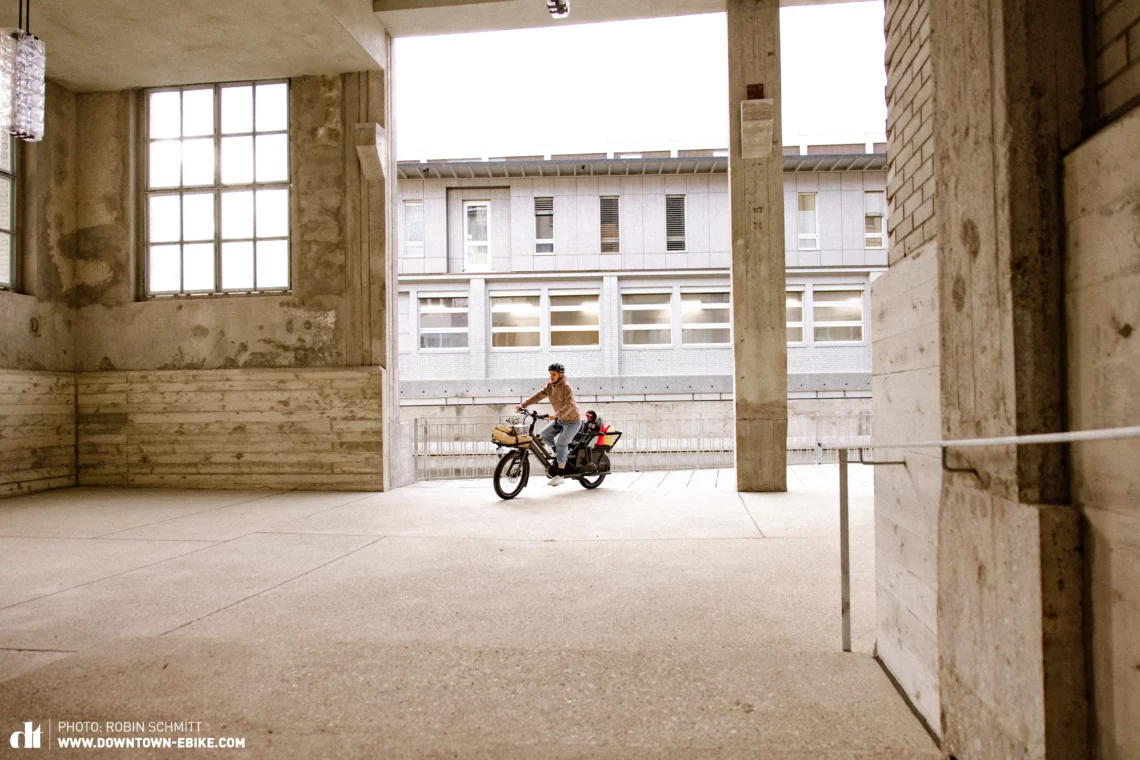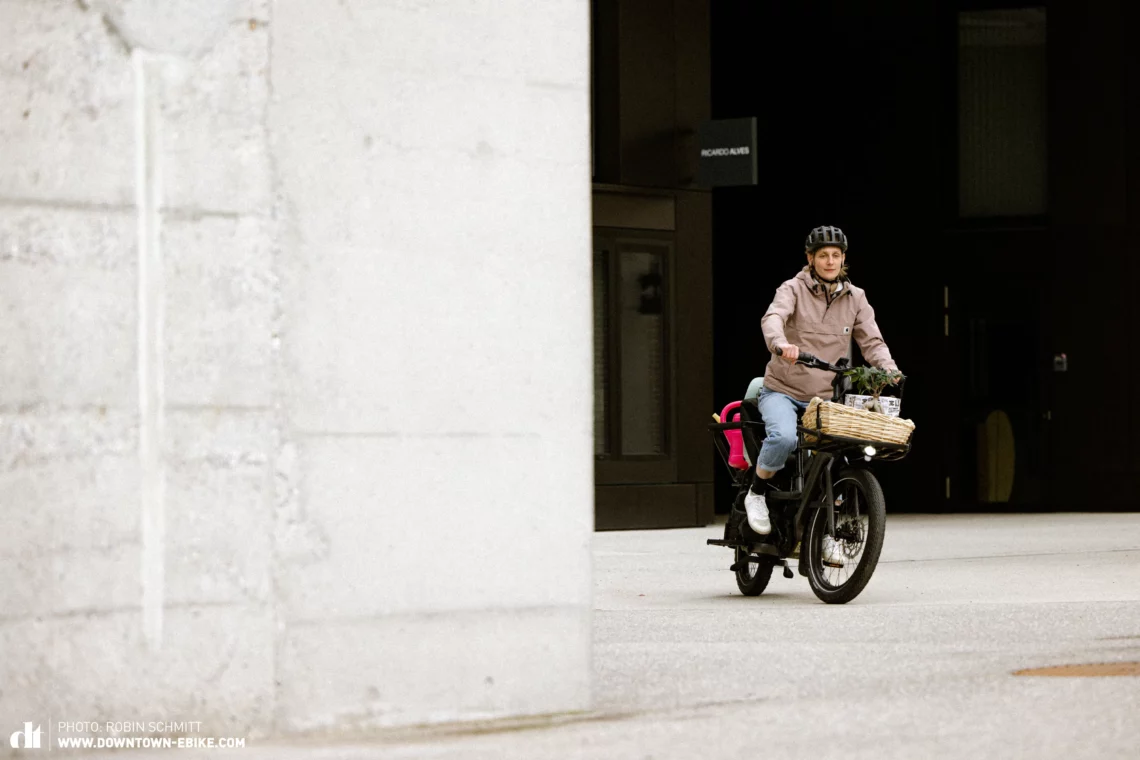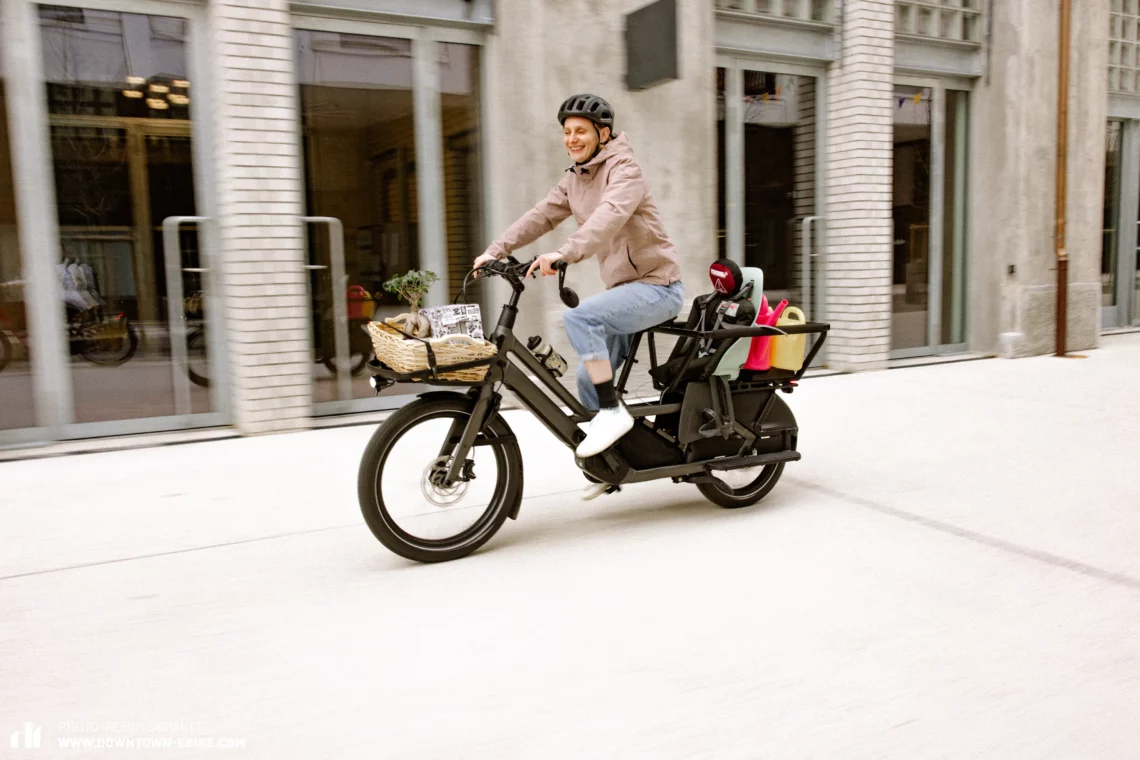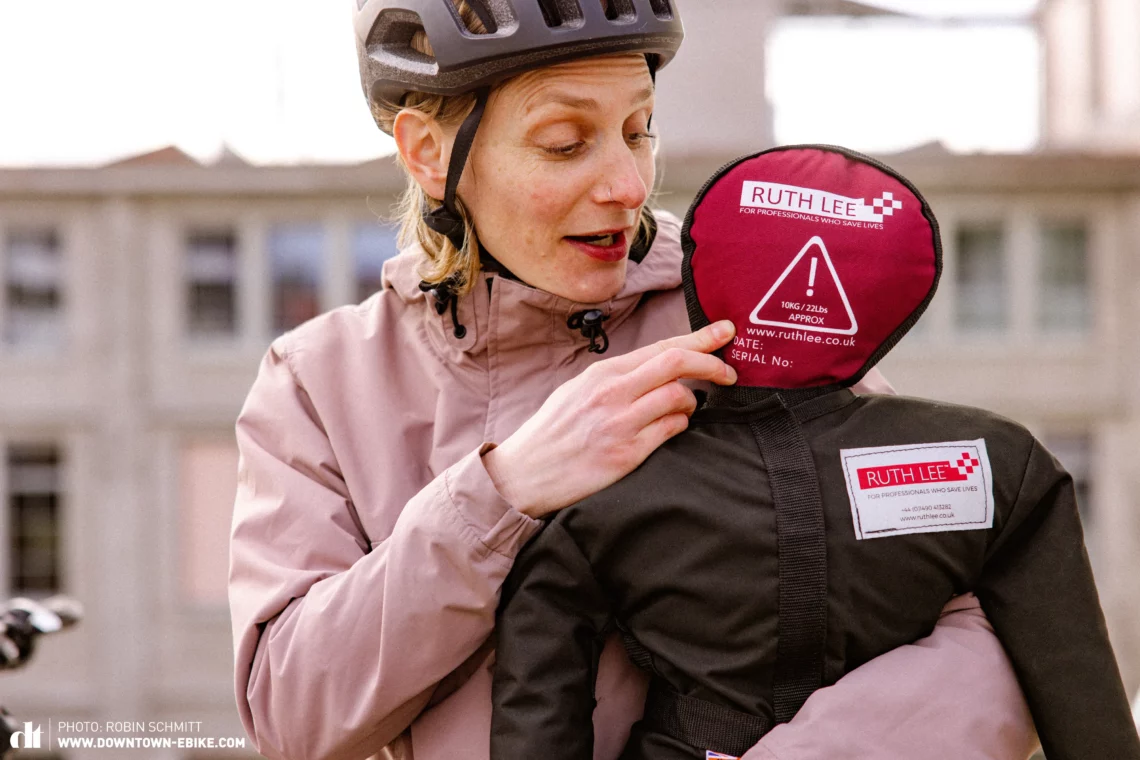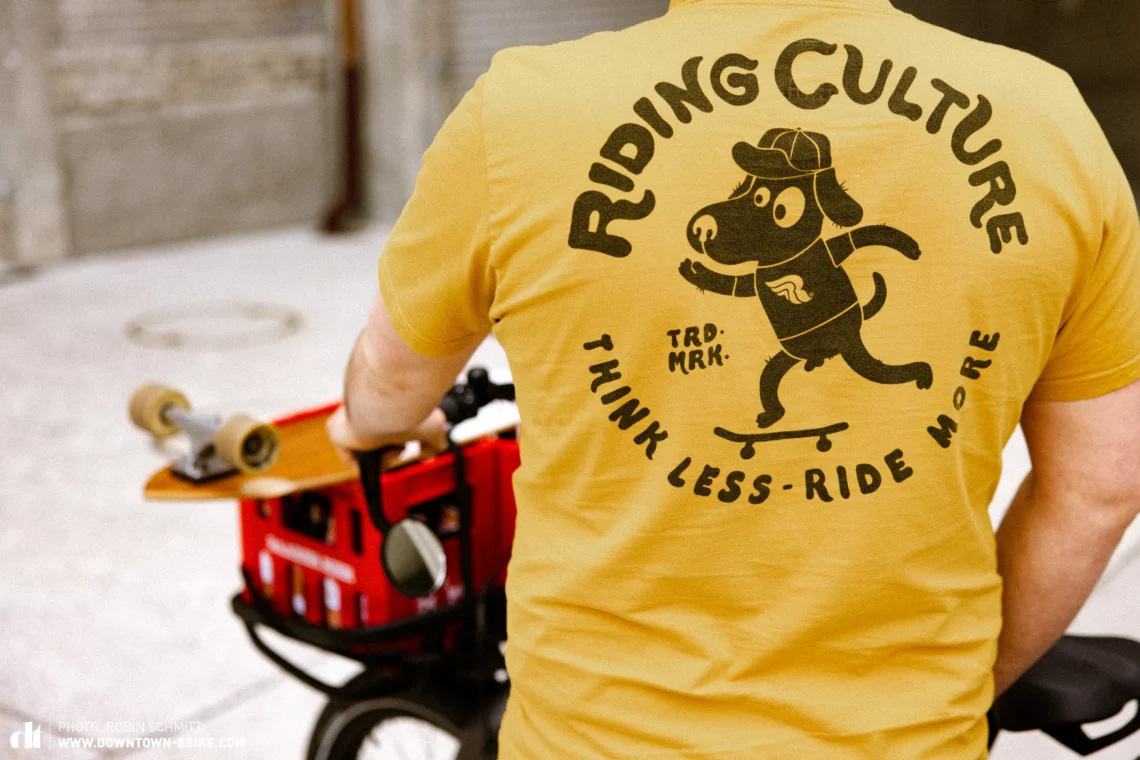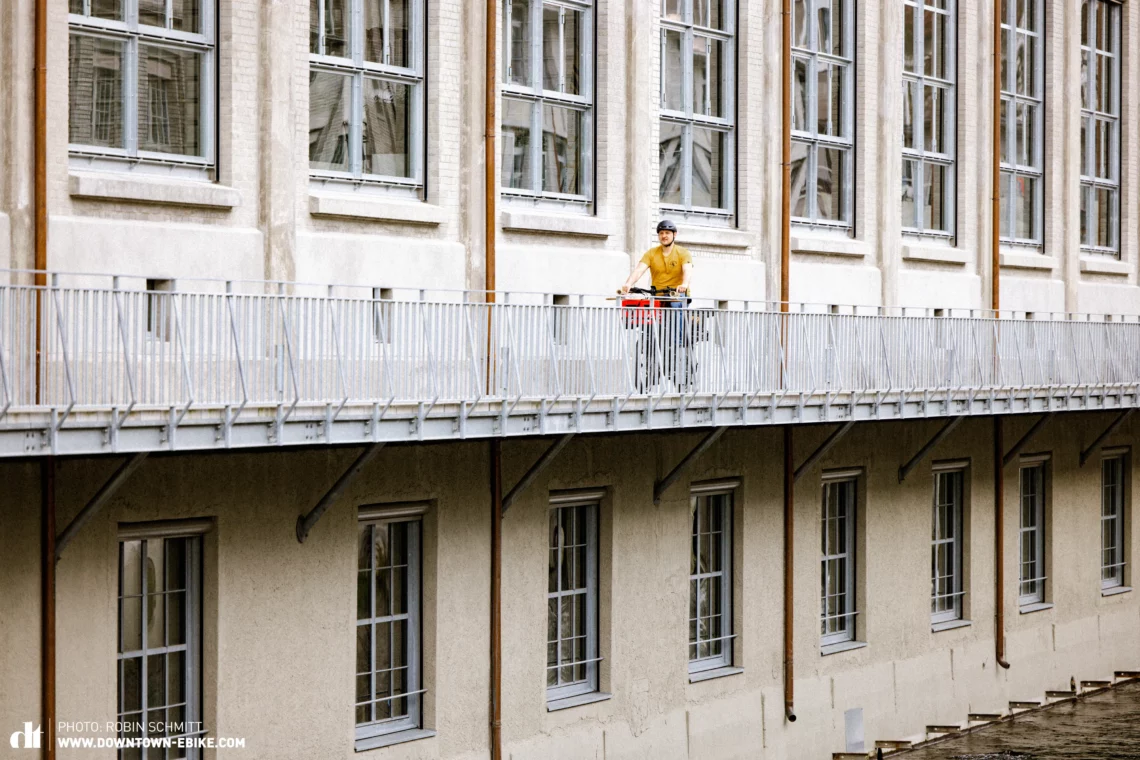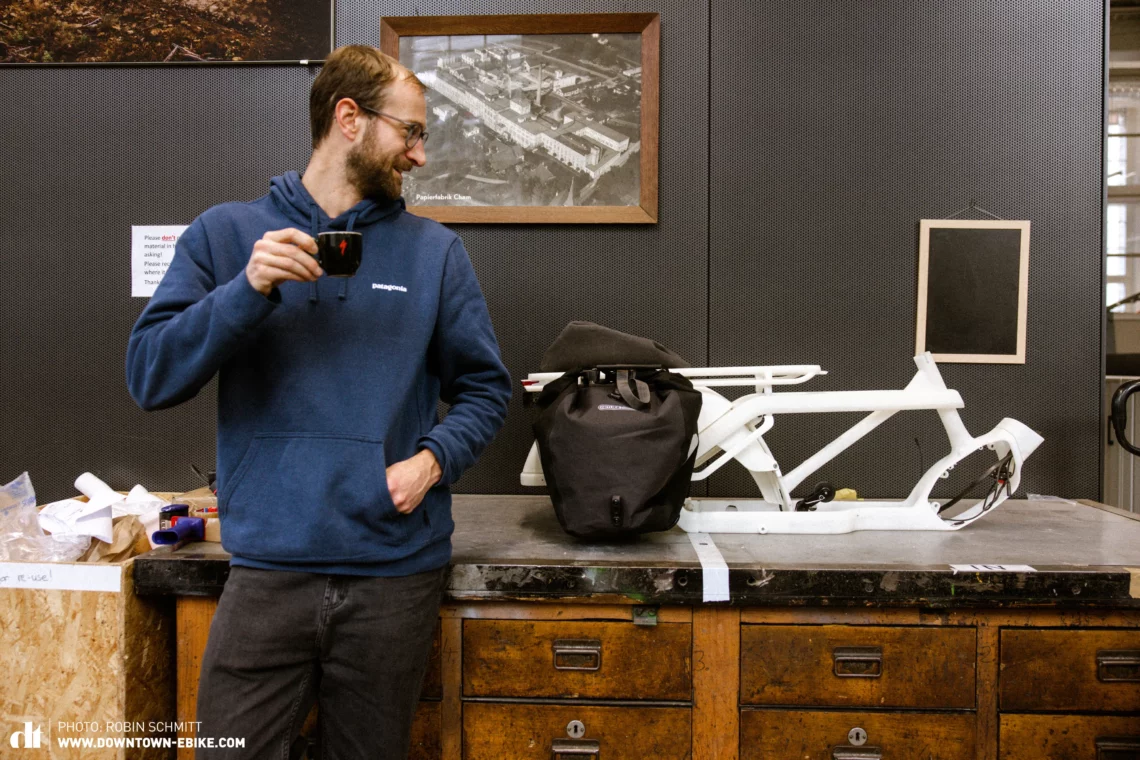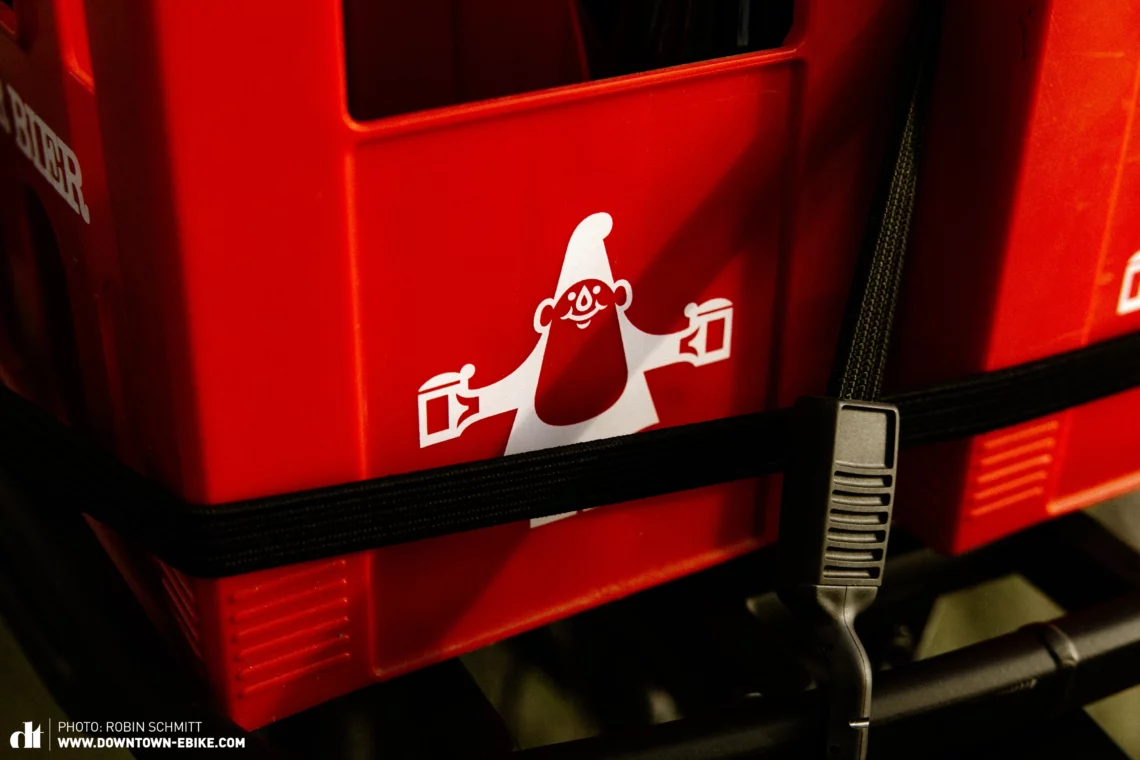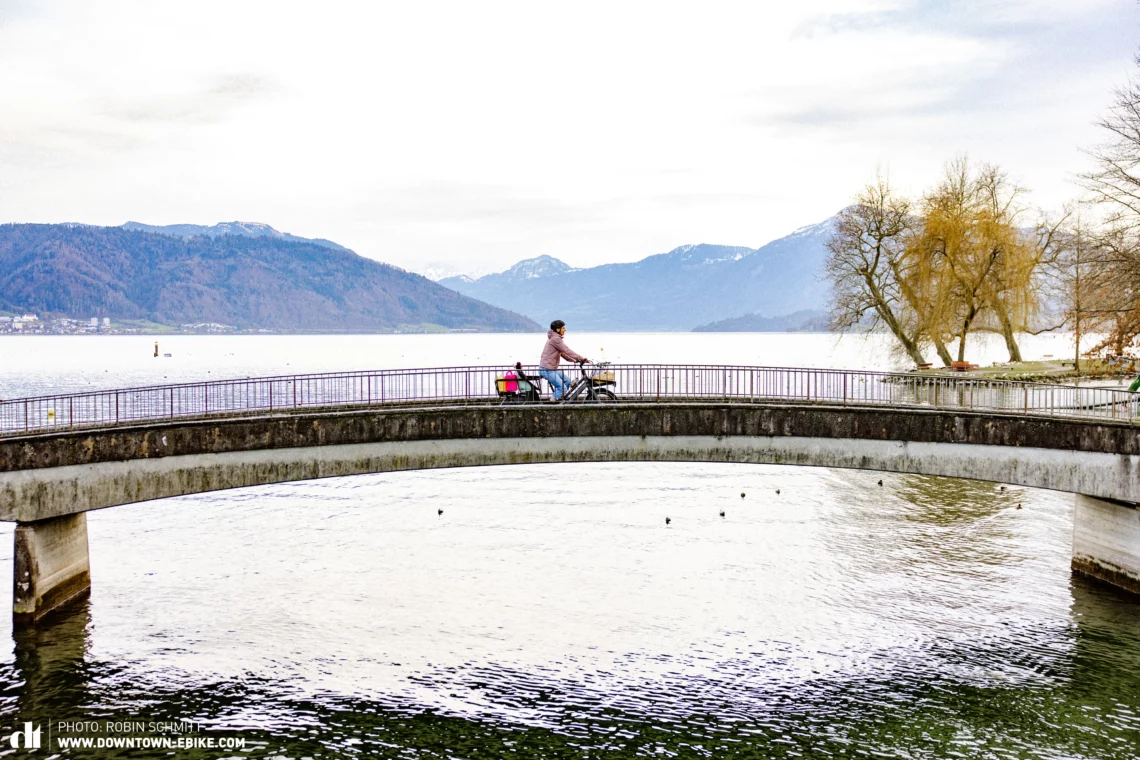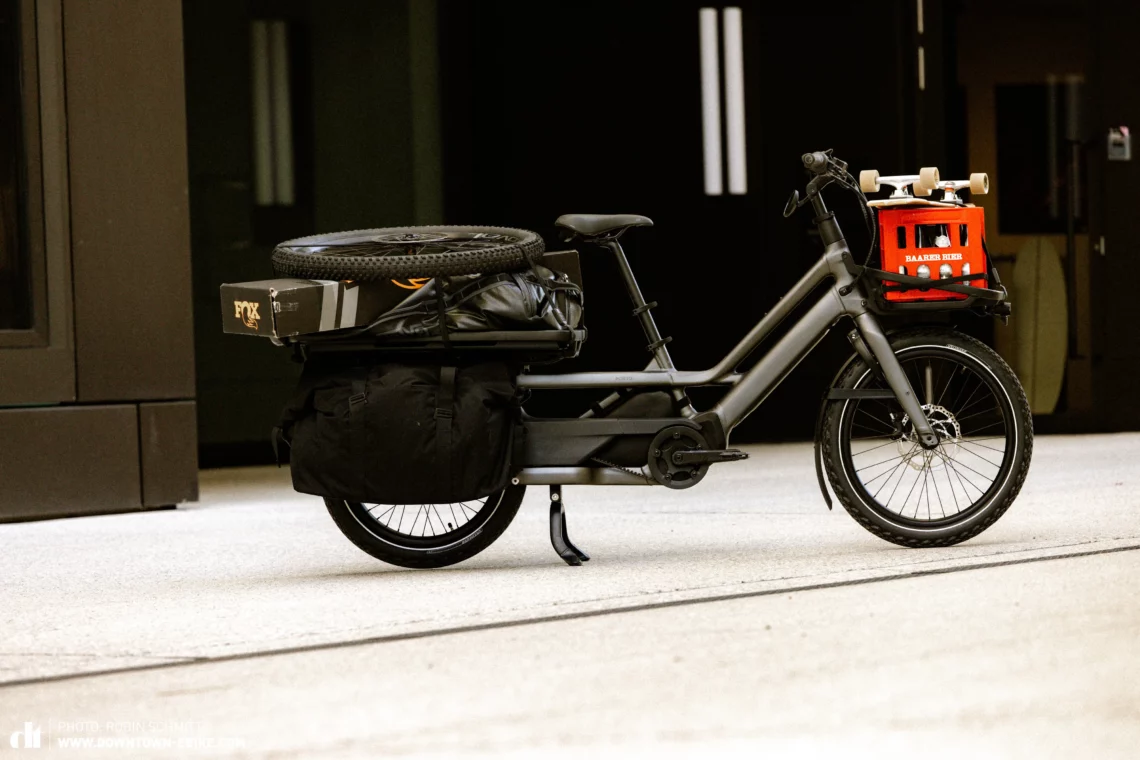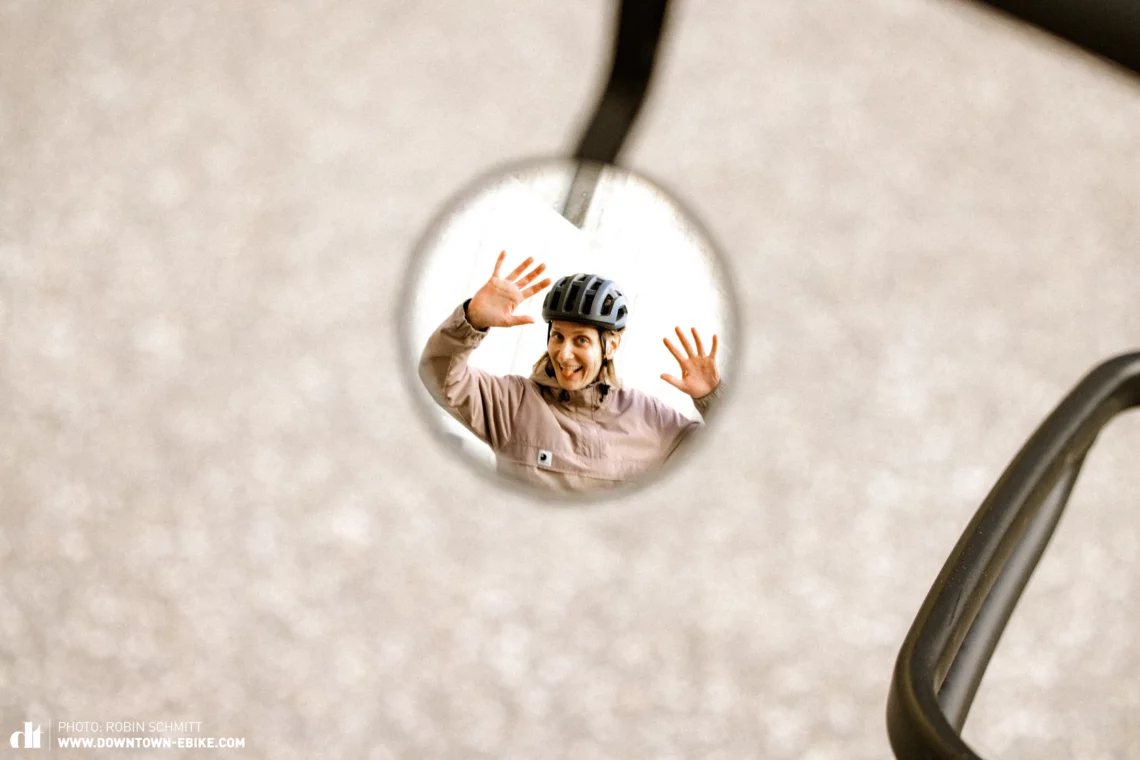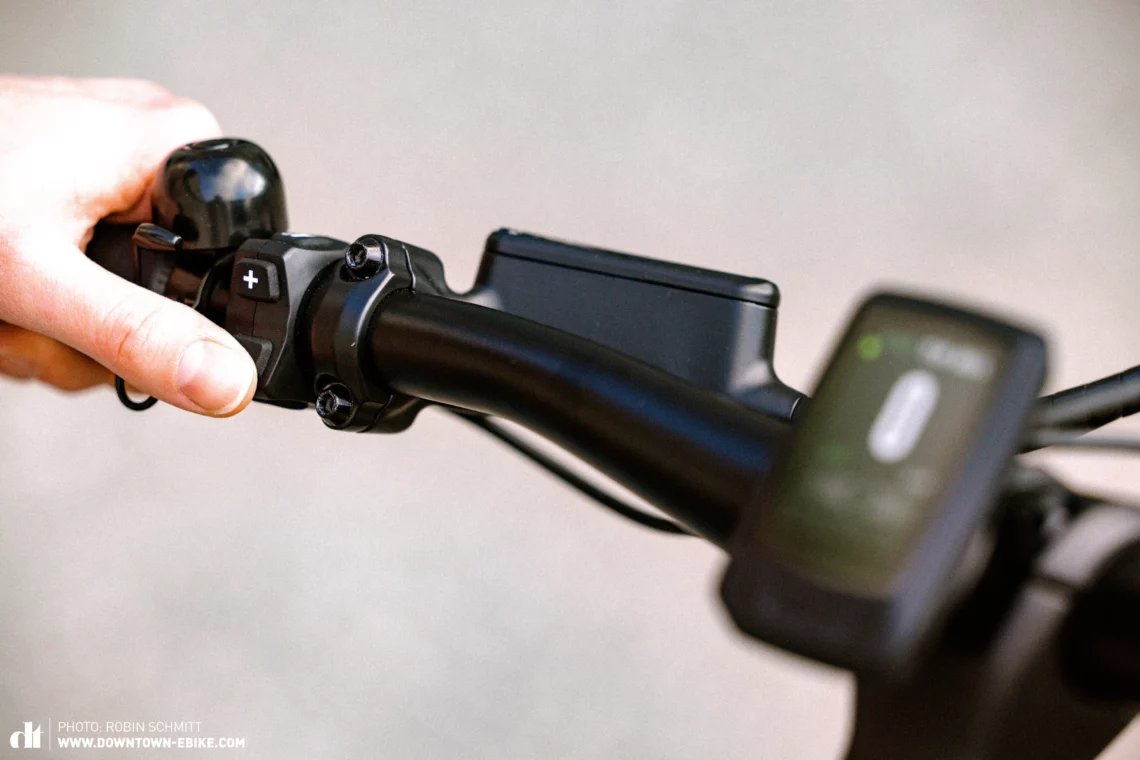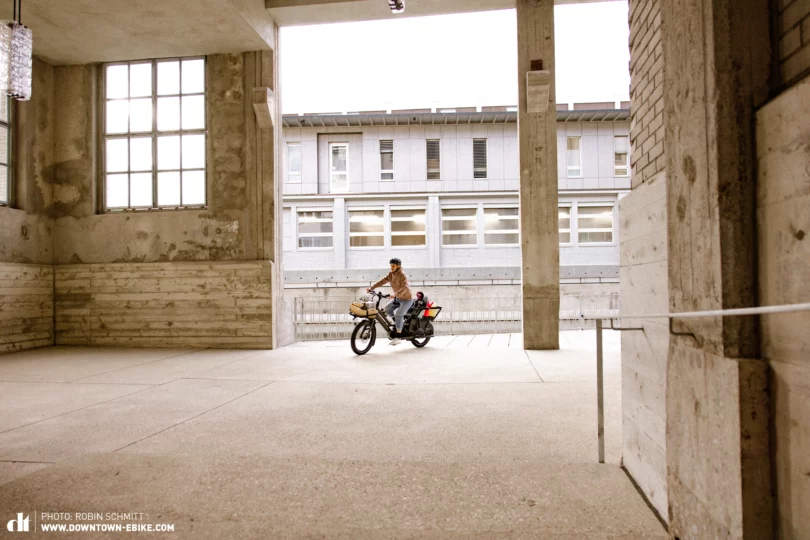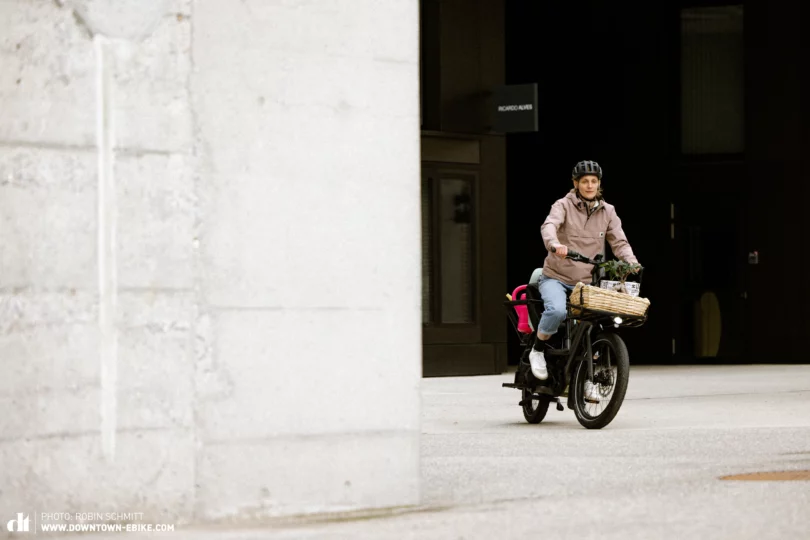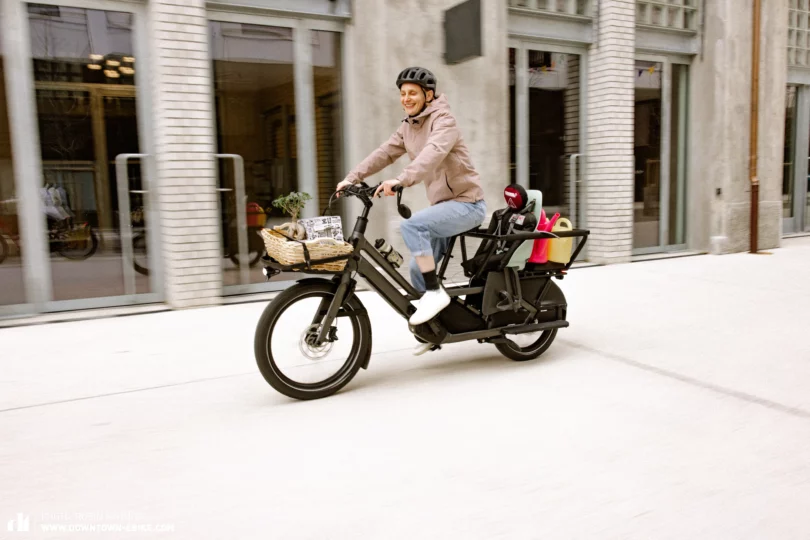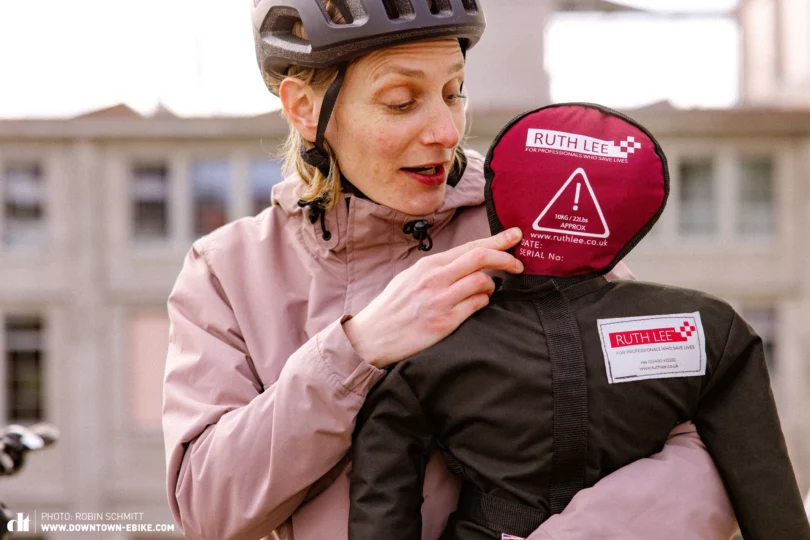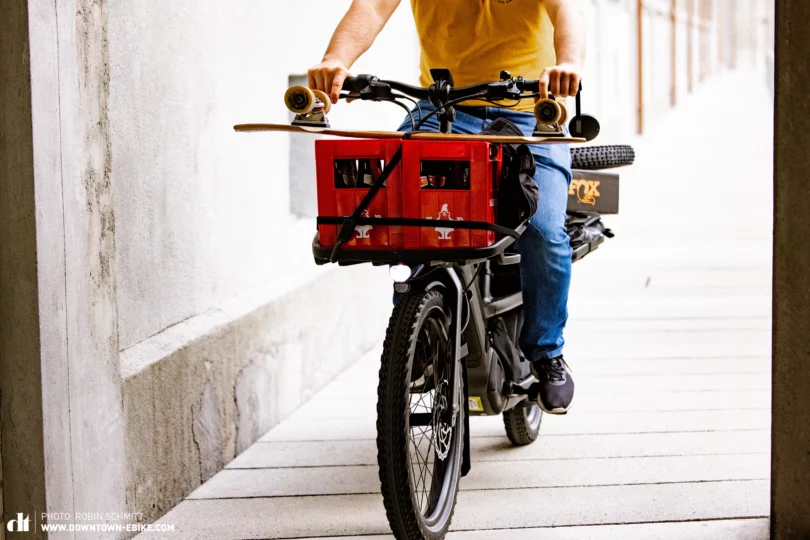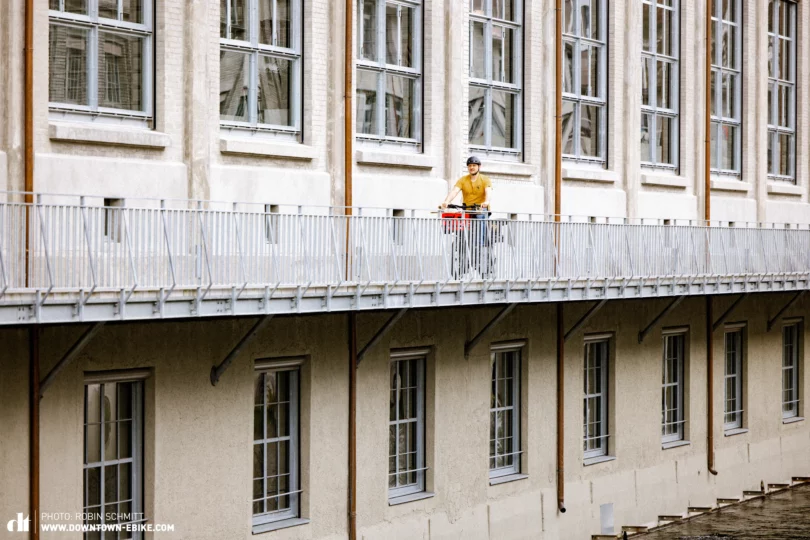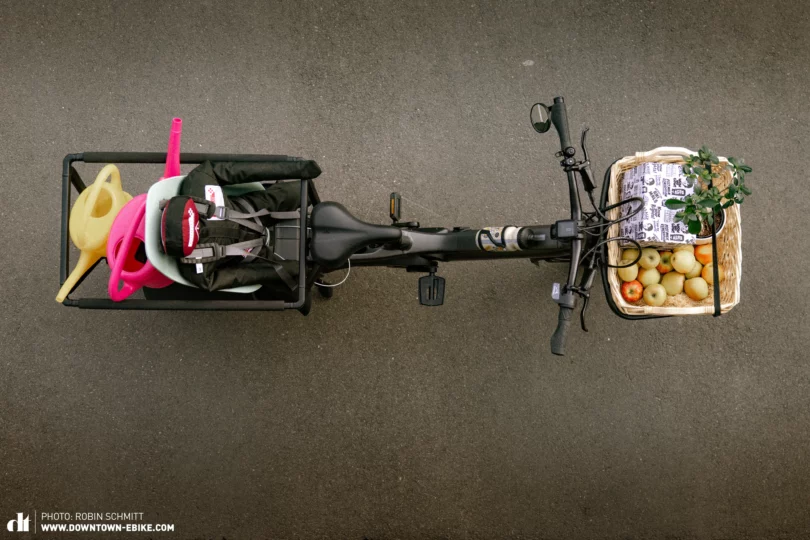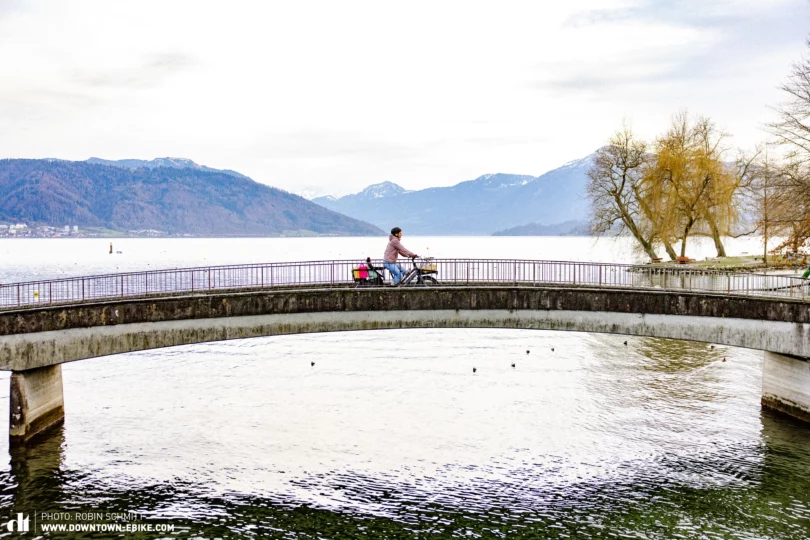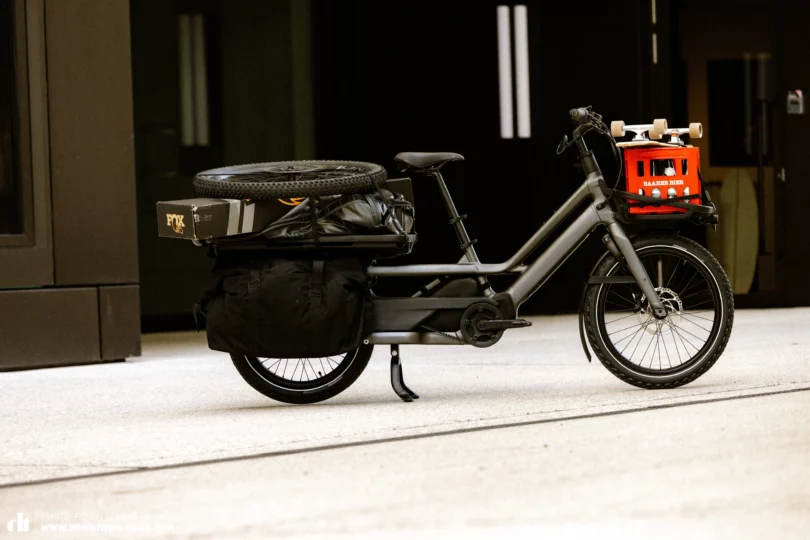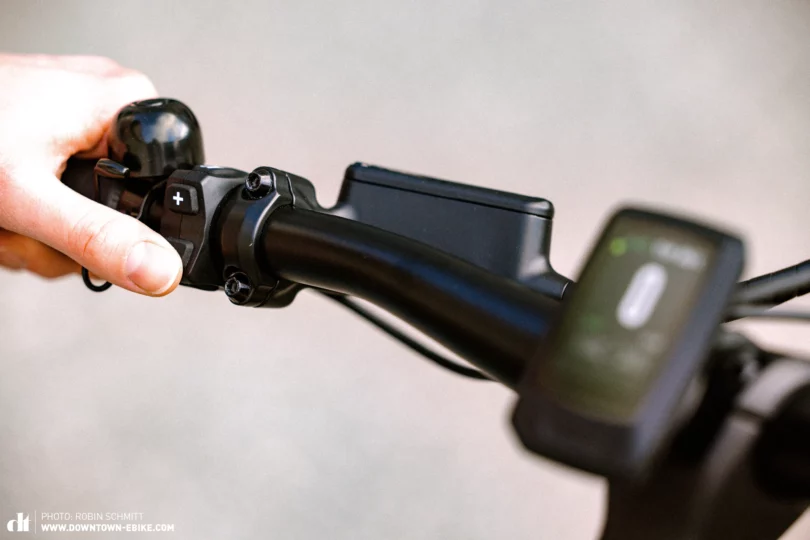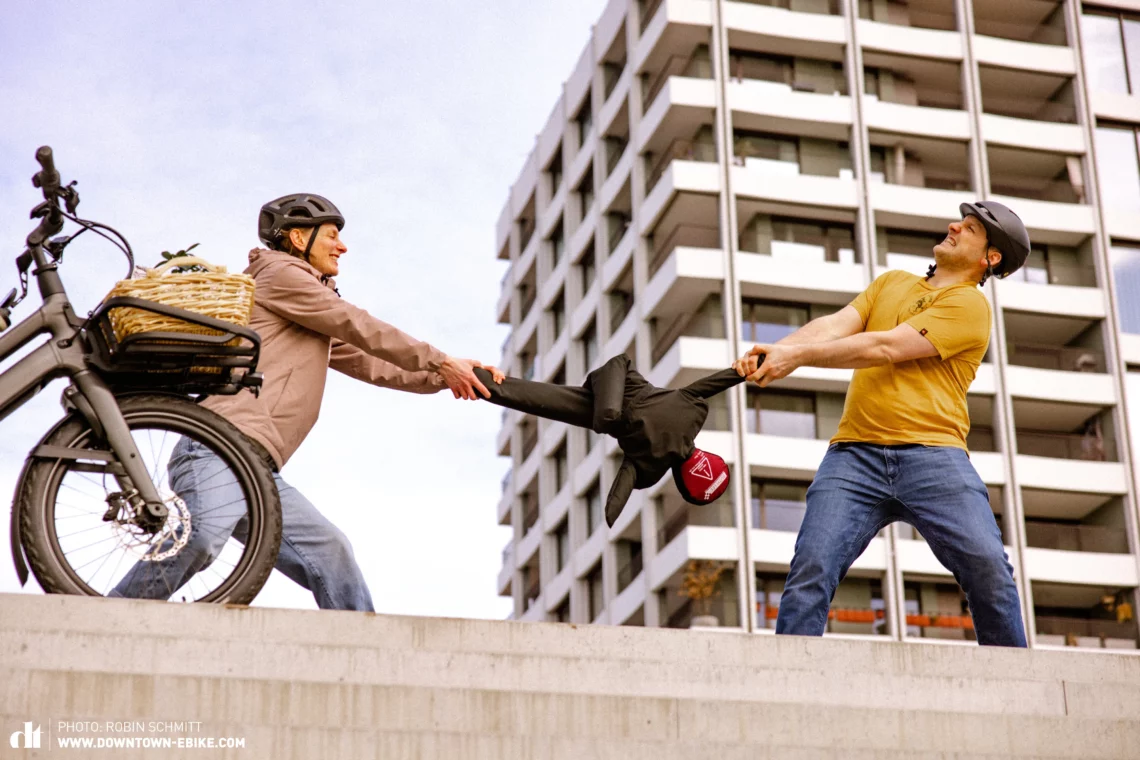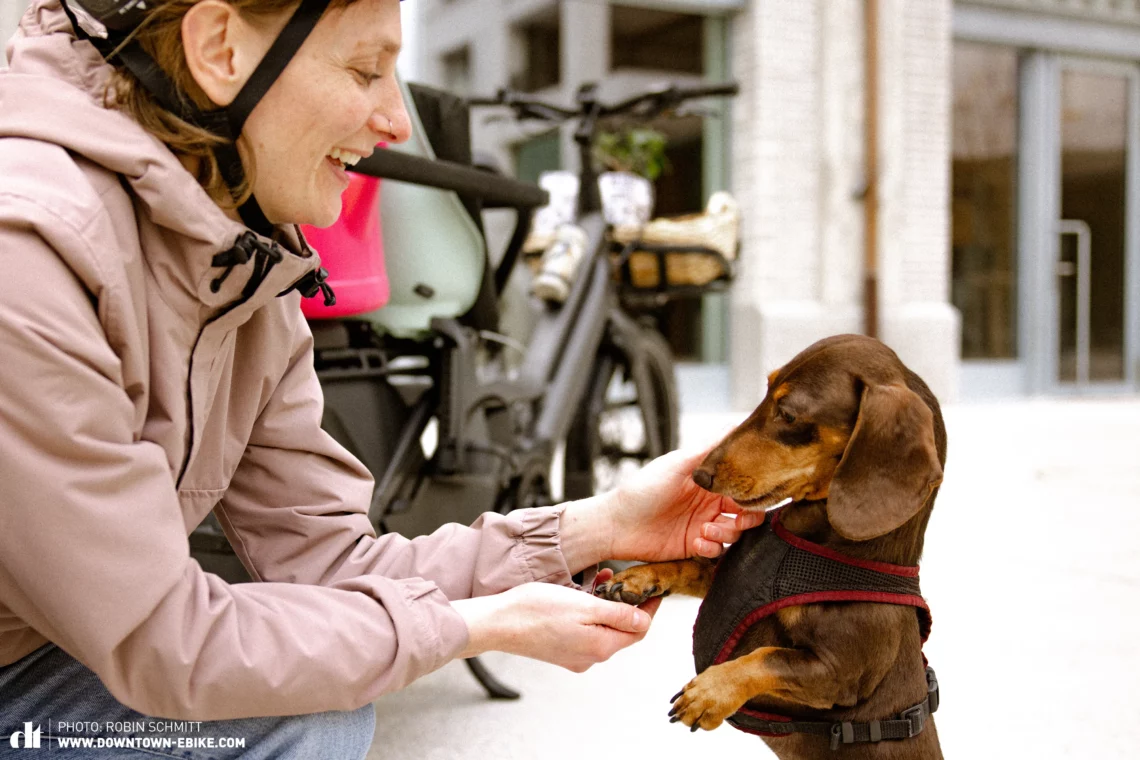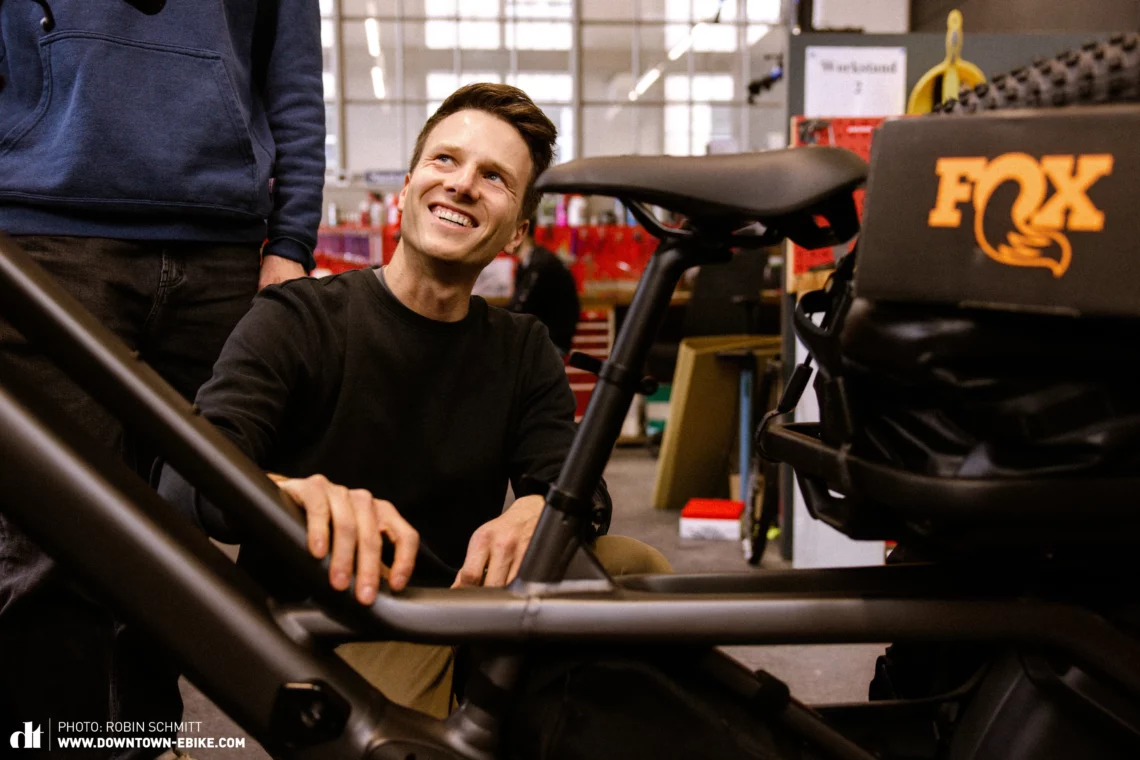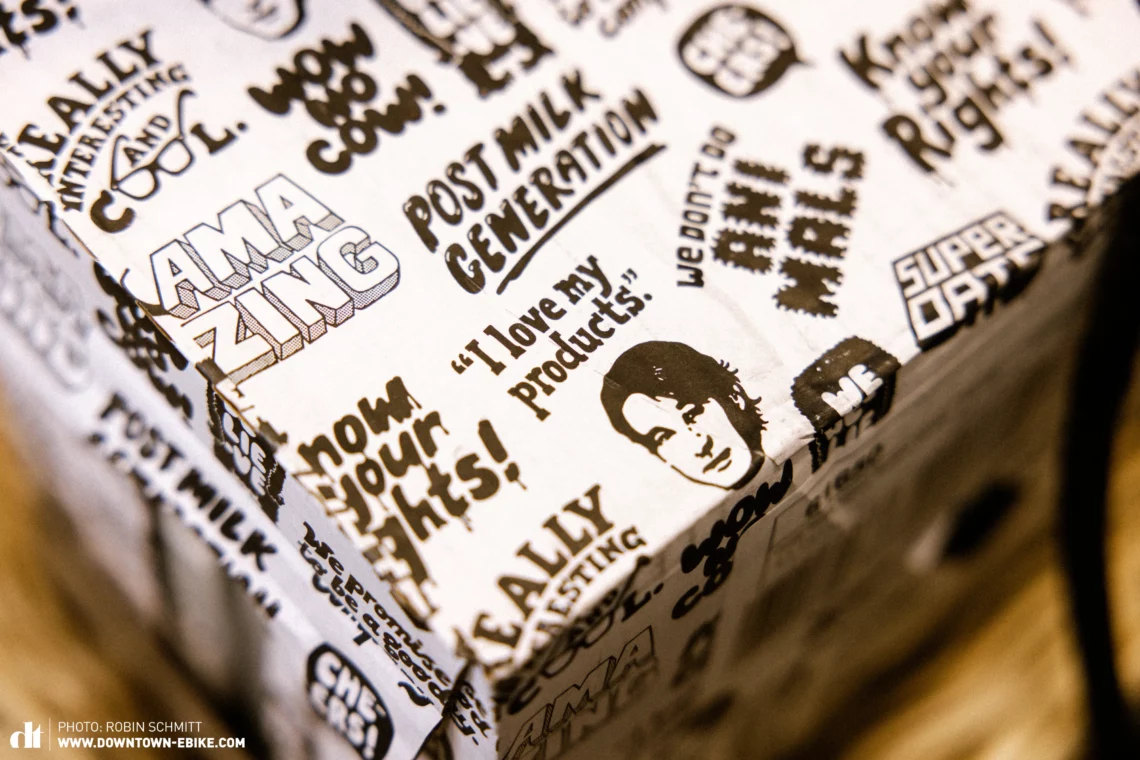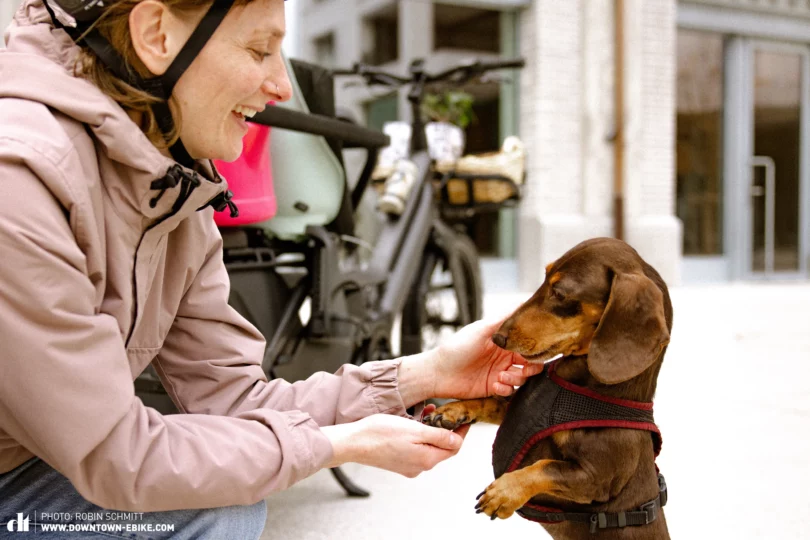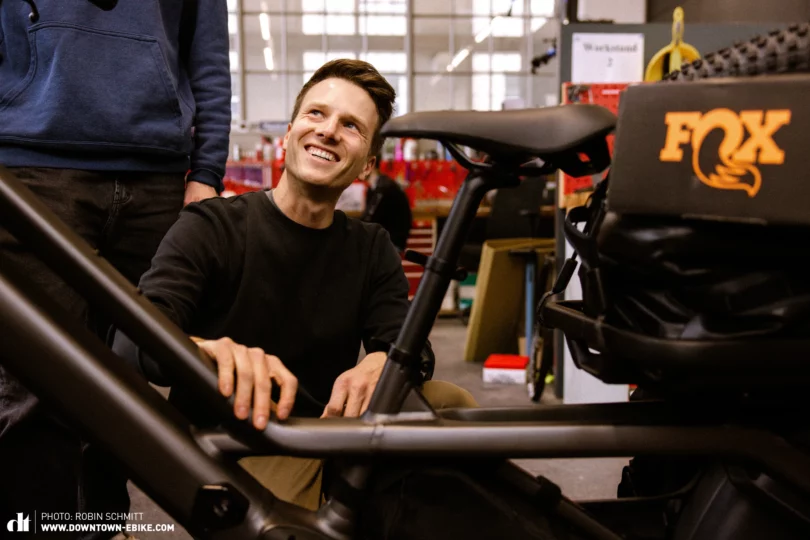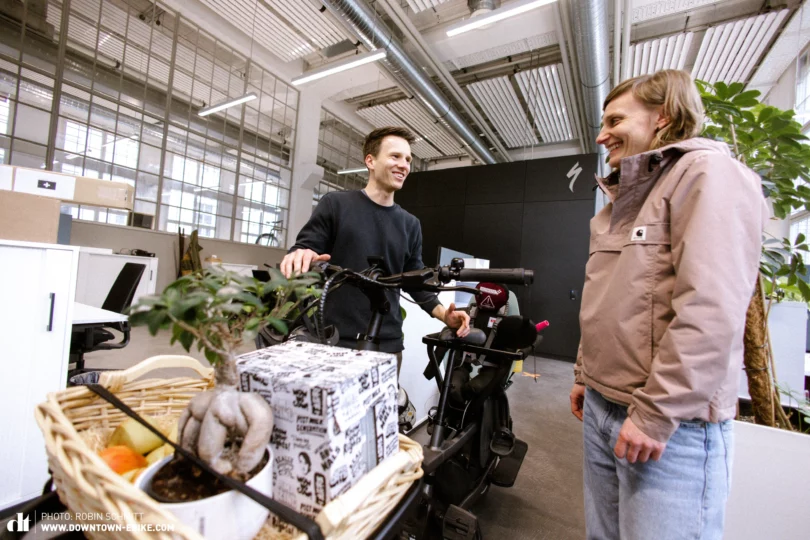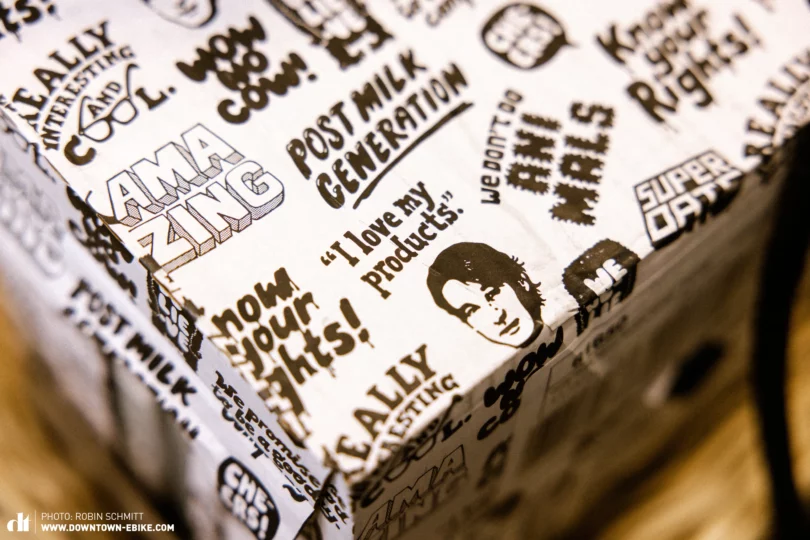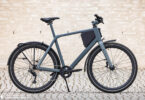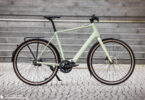A cargo bike had been the missing piece in Specialized’s product portfolio. The introduction of the new Porto longtail cargo ebike is ready to fill that gap and complete the Specialized range. During our visit to the Specialized Turbo Unit in the Swiss town of Cham, we had the opportunity to test their latest addition and find out why this cargo ebike is so important to the brand.
Nobody refuses an invitation to Specialized’s hallowed halls, the Turbo development centre in Cham, Switzerland. After each meeting, you’re a fair bit more knowledgeable and you get a sneak preview of the upcoming products. Last year, our sister magazine E-MOUNTAINBIKE visited the centre to see what was cooking in the sports sector. This time Specialized’s Product and Category Managers – Dominik, Mattia, Vincent, Christoph and Stephan – took the time to show the DOWNTOWN team every angle of the new Porto cargo ebike.
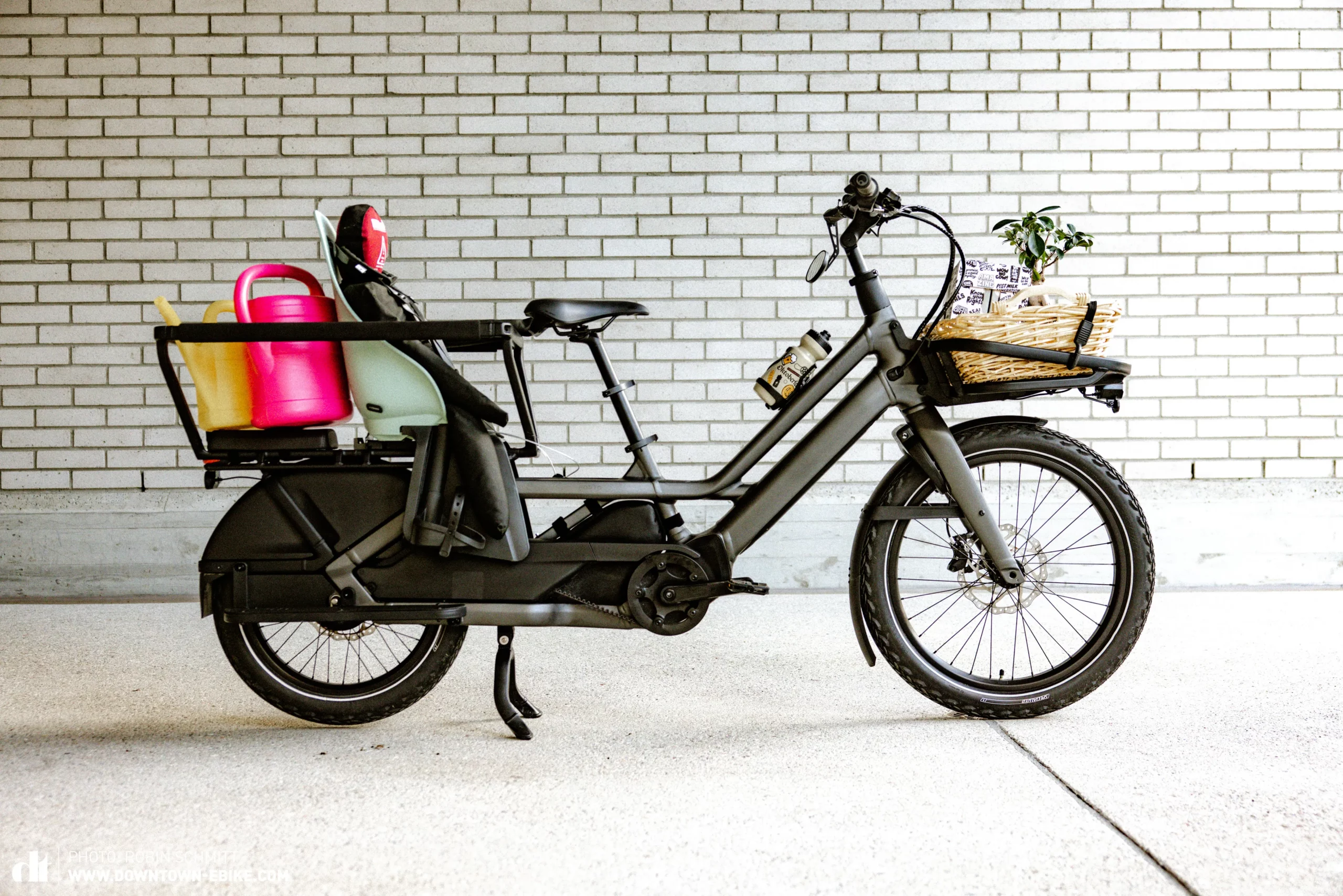
from 39.9 kg in One Size |starting from € 6,500 | Manufacturer’s website
From a commercial point of view, the cargo bike segment is of secondary importance to Specialized. The expected sales figures are not particularly promising compared to models such as the Turbo Levo. From a strategic point of view, however, the cargo bike market is crucial for the Turbo Unit in Switzerland: Specialized want to be the brand of choice for all bikers. They are already well positioned in all competitive racing categories, and even often setting the pace. Their portfolio also includes high-end city, leisure and trekking bikes. But until now, there has been no real cargo alternative for dedicated Specialized enthusiasts.
After a long period of development, the Specialized Porto finally sees the light of day. It is the missing piece in the Specialized mosaic, the final element to fulfil the last remaining dream of die-hard bike fans.
The Porto is based on the longtail cargo bike concept, with versatile transport options on the extensive rear rack. It is powered by the proven Specialized Turbo motor system with a Specialized 2.2 motor, 90 Nm torque, a 710 Wh battery and a belt for power transmission. The Cadillac of aluminium cargo ebikes comes with a mullet setup of 24″ front and 20″ rear wheels with 2.8″ wide trekking tires designed specifically for the bike. The Porto, however, doesn’t have any suspension.

The cargo ebike weighs 39.9 kg in its basic configuration, with no fitted accessories, and has a permissible total weight of 200 kg. Acquiring Specialized’s cargo dream bike comes with a price tag of € 6,500. A visit to the Specialized Turbo Unit in Cham, Switzerland, and our editorial team’s many fully laden test rides will tell you whether the Porto is a worthwhile investment.
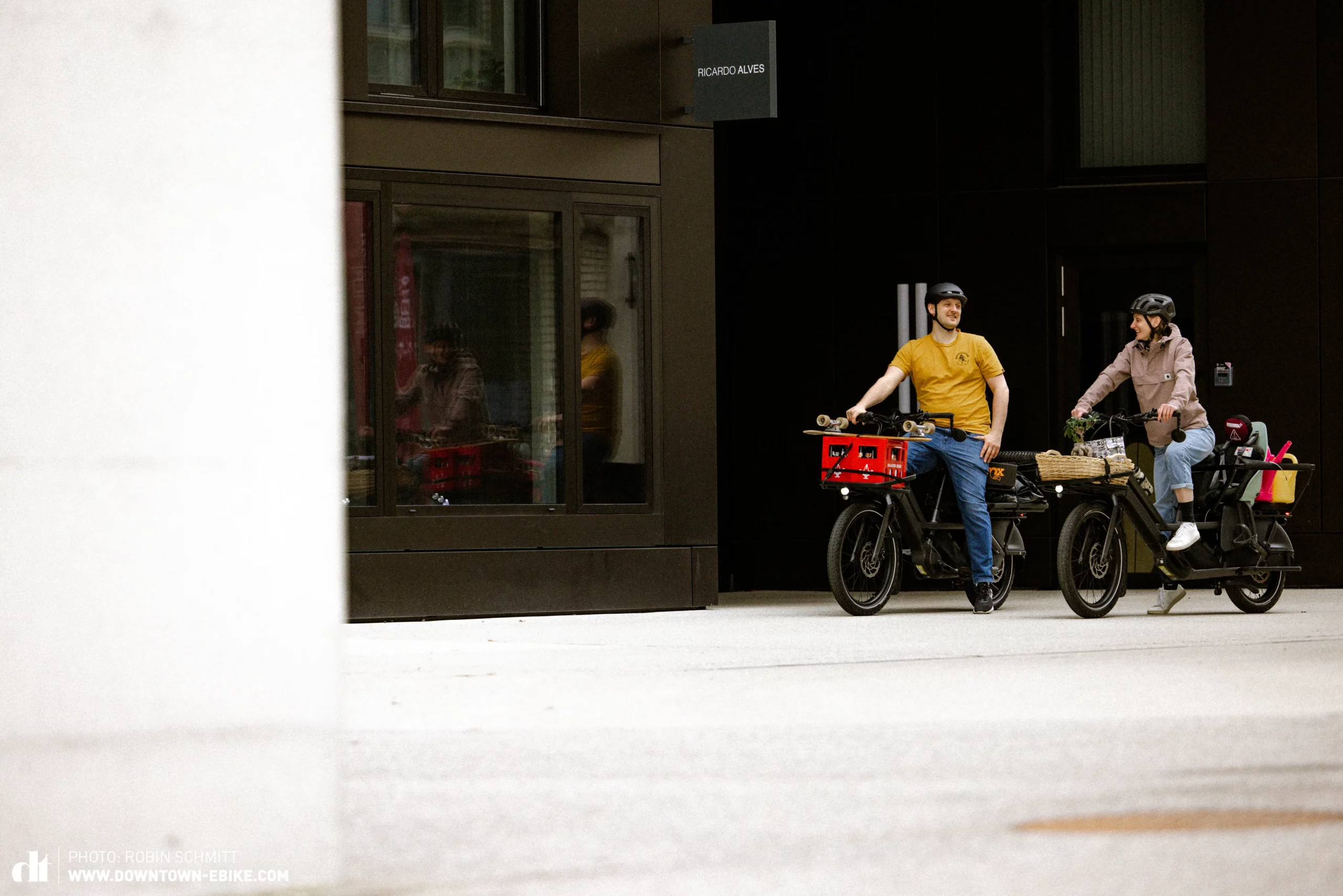
The Cadillac of cargo ebikes – The new Specialized Porto longtail cargo bike in detail
The new Porto is a longtail cargo bike with a robust aluminium frame. Several manufacturing processes have been used to combine attractive design with high reliability. For example, unlike the rest of the frame, the solid head tube is cast and CNC-machined.
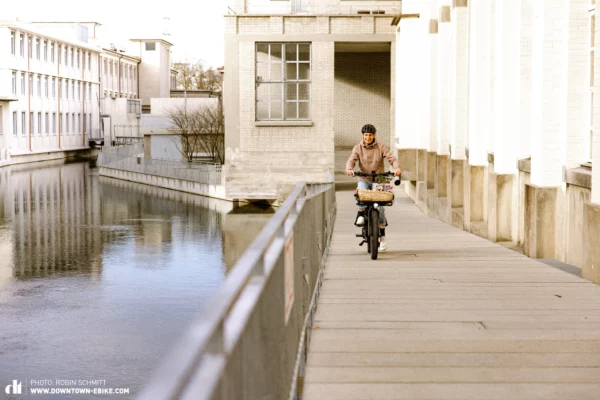

The Porto is not a true step-through bike like the Trek Fetch+ 2, but the top tube has been lowered as far as possible. However, shorter riders may still need to do a karate kick to get their leg over the 541 mm step-through.
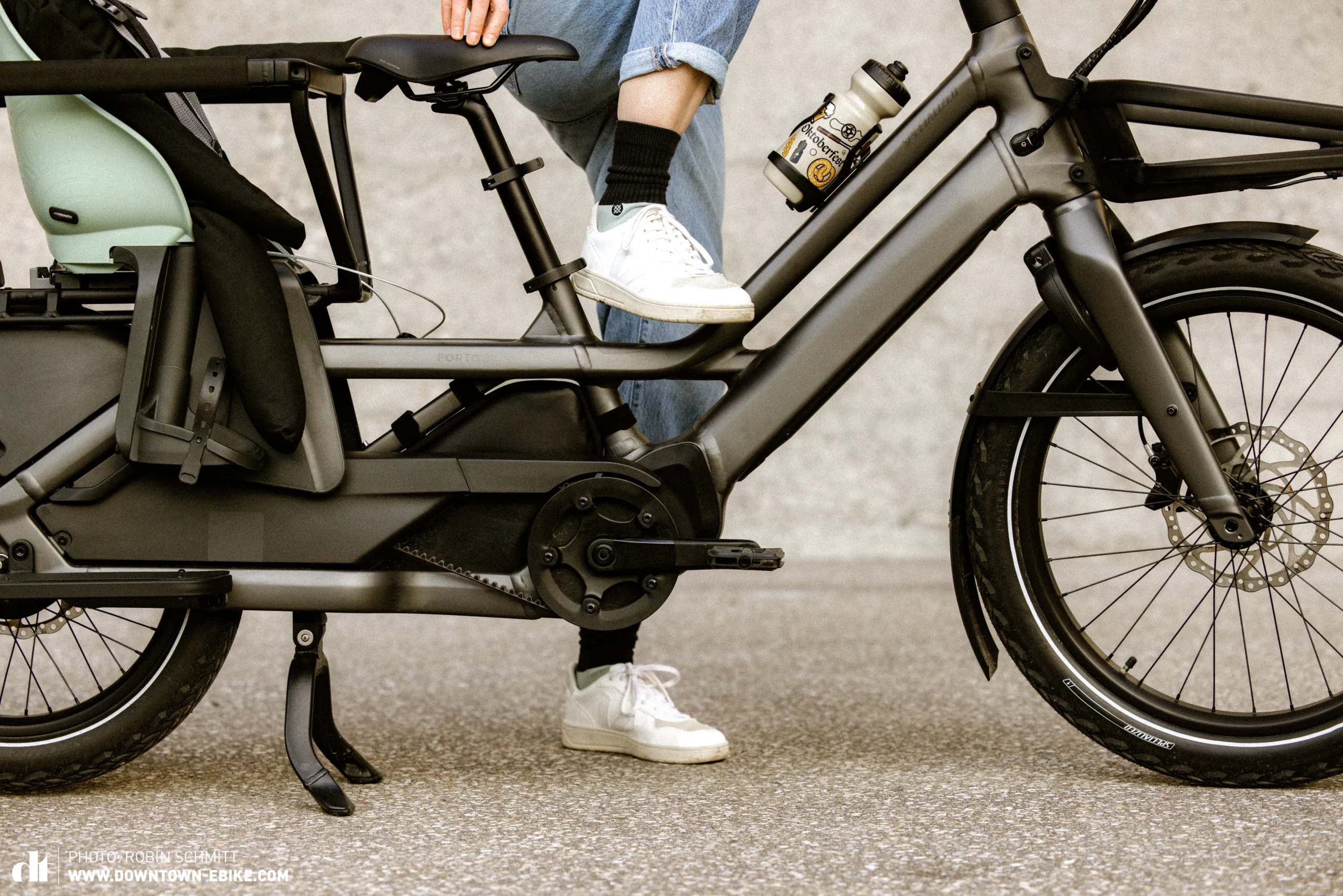
The front triangle is unpretentious yet exudes confidence. The exceptionally wide rigid fork, integrated into the ebike with a relatively slack steering angle, suggests that the Porto will also excel off-road, away from city traffic.
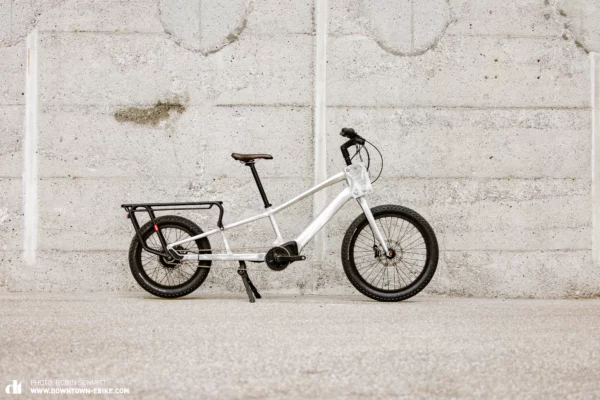

The rear frame triangle is occupied by a standard frame bag and a full cowl that encloses the drivetrain and rear wheel. This gives a sense of serenity to the silhouette, a design reminiscent of the covered wheel arches of a ’70s Cadillac. A closer look reveals that, unlike other longtails, the frame ends at the height of the rear wheel hub, with the rear luggage rack and wheel case attached to the frame by struts.

The motor and battery in the down tube have been cleverly integrated into the frame. The only visible remnants of the motor system are a few extra cables that run from the handlebar remote and display in large arcs into the frame. The conspicuous cable routing is due to the “one size fits all” concept of the Specialized Porto.

The size concept of the Specialized Porto longtail cargo ebike in detail
Like most cargo bikes, the Specialized Porto only comes in one frame size. However, it is designed to comfortably accommodate riders from 1.55 m to 1.95 m tall. To make this wide range possible, Specialized had to shed a few dogmas. Angle-adjustable stems and, even more unusual, a height-adjustable handlebar are not typically found on Specialized bikes. The original assumption at Specialized was that the high demands of mechanical stress were not compatible with adjustable cockpit components. But apparently they are. A clamp on the oversized handlebar tube can be loosened with a quick release to adjust the handlebar to the desired height, giving a range of adjustment of just under 7 cm.
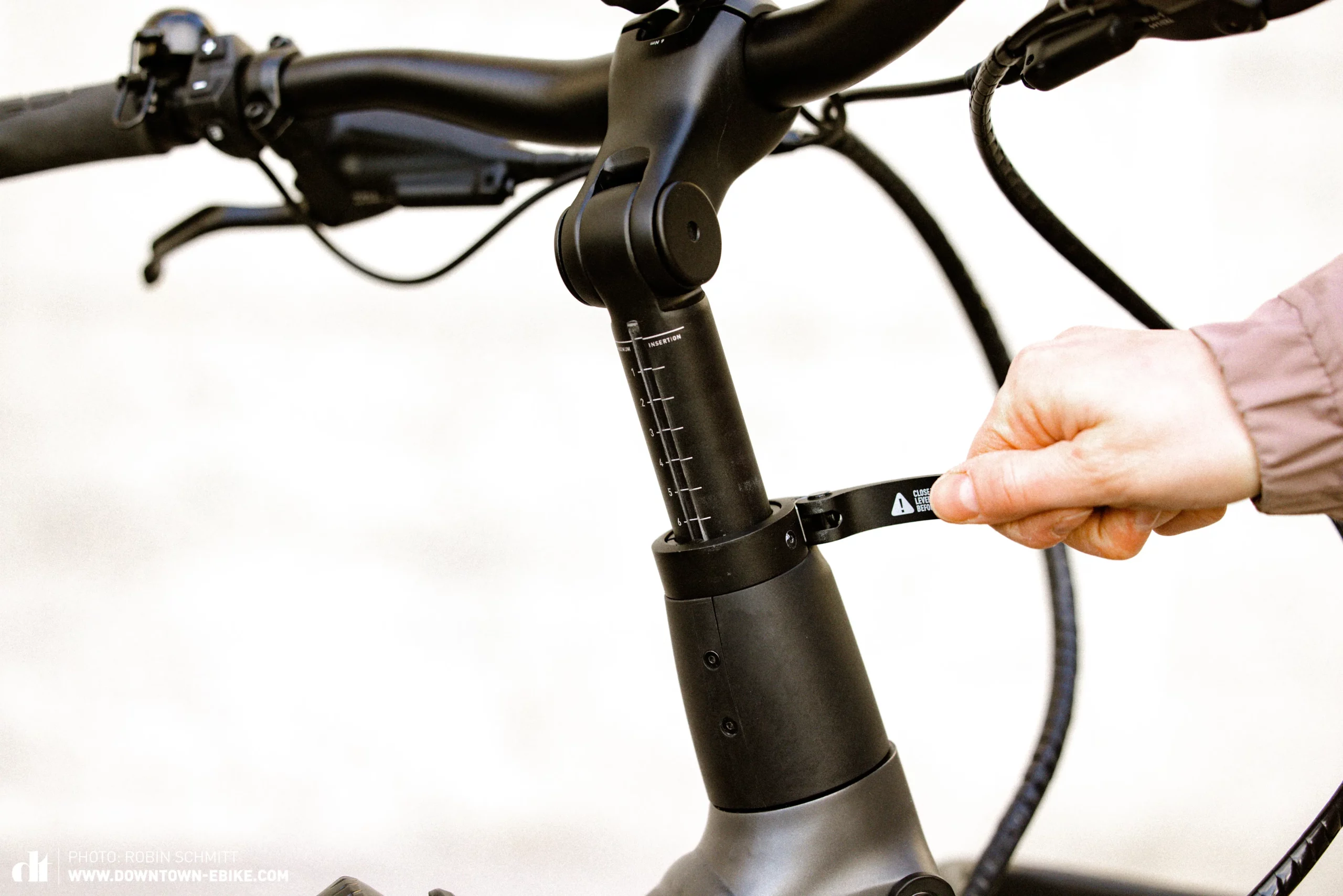
The angle-adjustable stem is set with a 5 mm Allen key. A cable clamp on the front carrier keeps the cables out of the way, so they don’t get caught even at maximum steering angle.
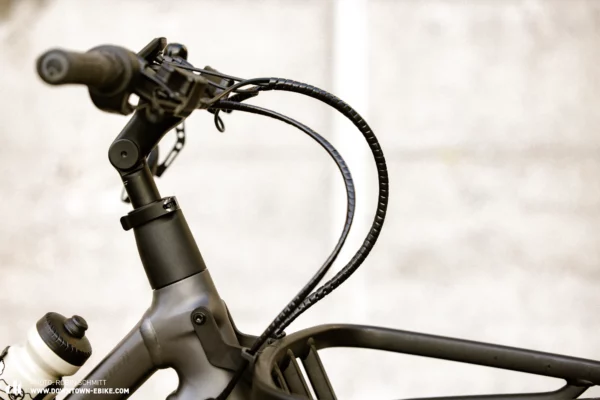
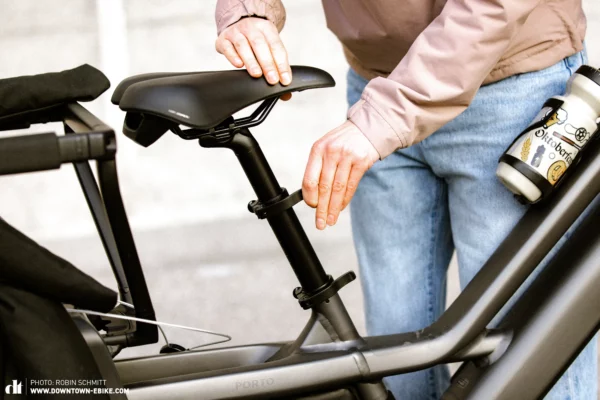
The saddle height is adjusted in a similar way to the handlebar. There are two quick-releases to help you find the right height. Because of the slack seat angle, the distance to the handlebar increases as the saddle extends. As a result, even the taller editors in our team never felt cramped on the Porto.
Specialized have also come up with a clever concept for transporting passengers on the extended rear, without compromising on ergonomics.
The transport concept of the Specialized Porto cargo ebike in detail
If you refrain from hanging plastic bags from the handlebar, the Specialized Porto offers a total of six places on the bike to carry kids and whatnot, though the rear carrier does the lion’s share of the heavy lifting.
The Specialized Porto has a permissible total weight of 200 kg, the extended rear carrier accounts for 60 kg of this. It has three MIK HD mounting points for easy attachment of compatible child seats or shopping baskets.
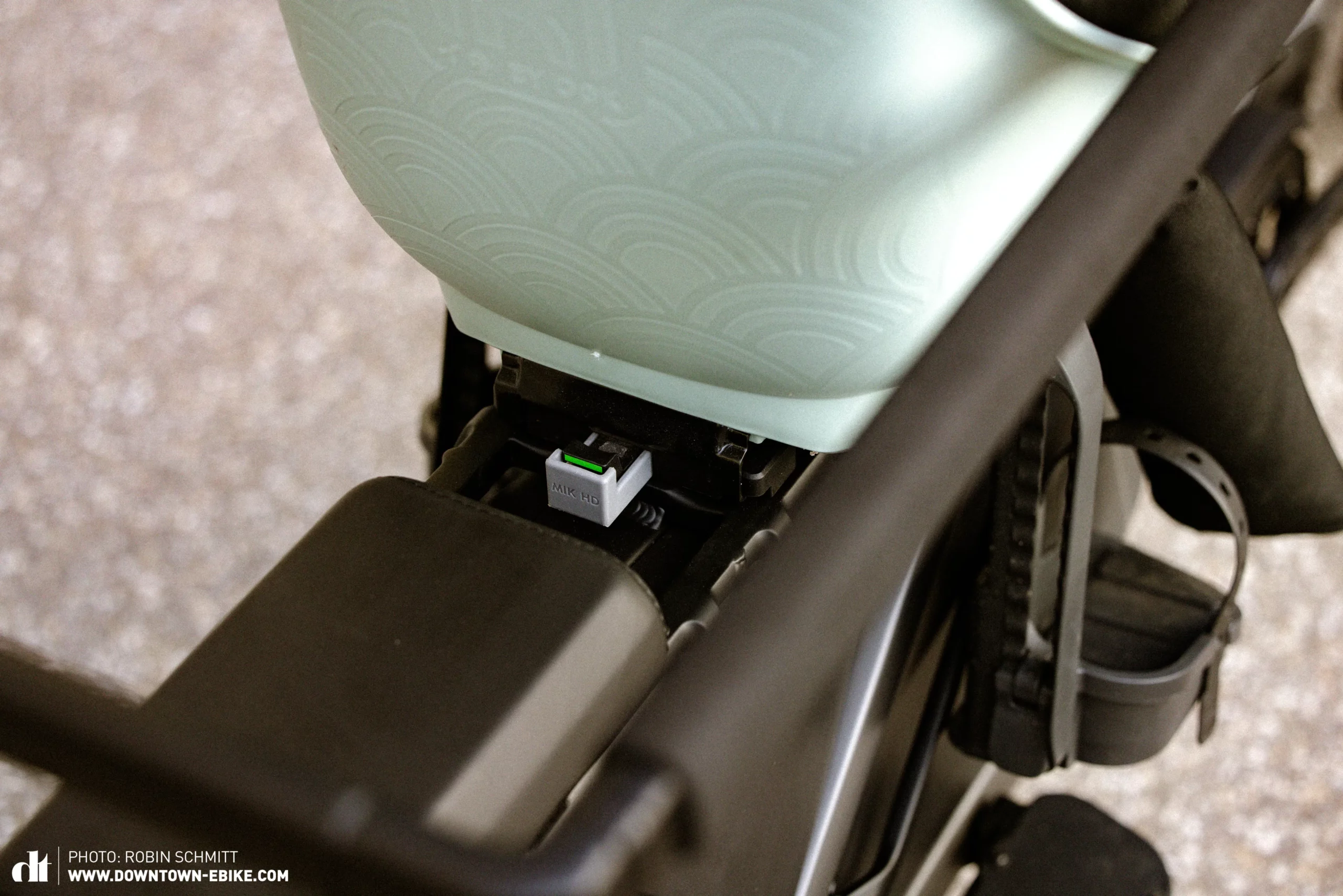
If you want to go from shopping to passenger transport even faster, Specialized offer the necessary accessories in their catalogue. The Porto Safety Rails are available for € 220 and consist of an aluminium safety rail with padding. The matching Porto Passenger Seat, a seat cushion with MIK attachment, is available for an additional € 50. With two of the seat cushions fitted, two children can sit safely behind each other at the rear. Two water bottles can also be attached to the rear end of the safety rail. The dimensions of the safety rail are also specifically designed to carry Euroboxes with a length of 60 cm and a width of 40 cm.
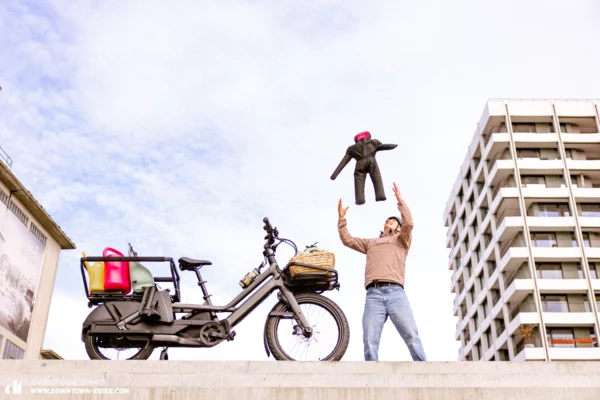
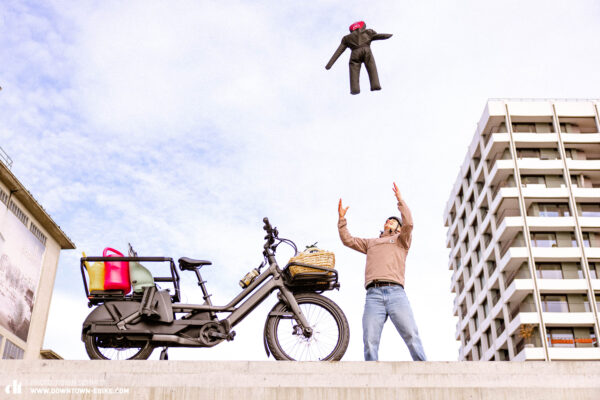

The fully enclosed drivetrain and covered rear wheel prevent passengers’ feet from getting caught in the spokes or belt. To prevent little legs from dangling freely, Specialized offer two practical accessory options. You can either choose the Porto Foot Platform (€ 200) – two elongated footboards that can be attached to the sides in a high or low position for short or long legs, allowing them to “grow” with rear passengers. Alternatively, you can opt for the Porto Foot Pegs (€ 40), simple pegs that can be bolted to the long chainstays. The advantage of the pegs is that you can attach long panniers and baskets to the side rails of the rear carrier without the footboards getting in the way.
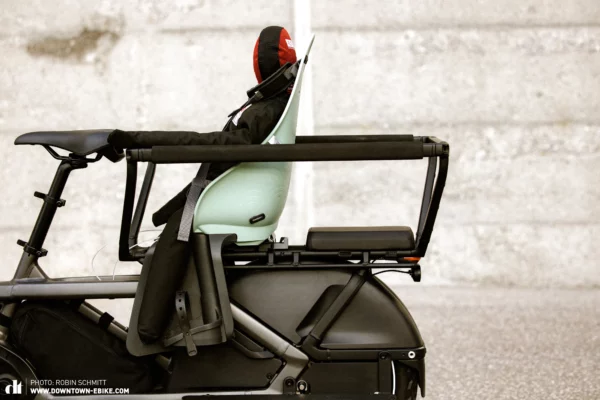
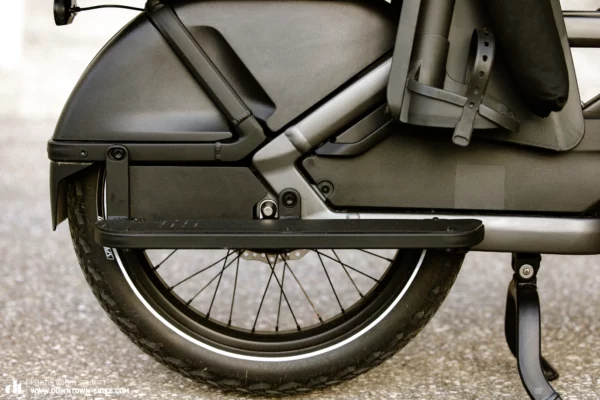
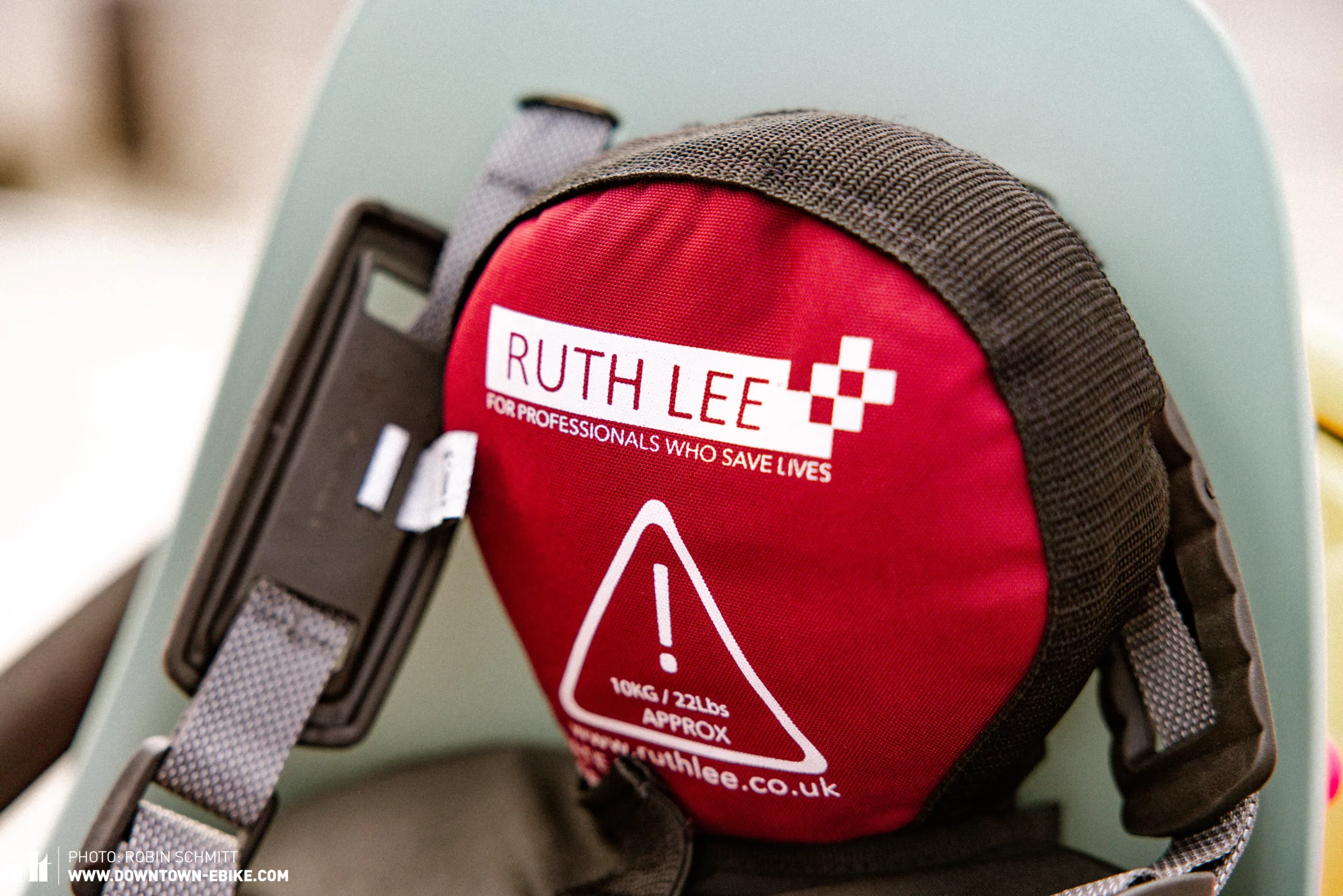
The Porto can be parked upright with the Safety Rail installed. Specialized have not balanced the Porto for this purpose and do not explicitly permit upright parking. However, the Swiss designers are aware that not all riders have a full-size cargo bike parking space at their disposal, so they have not made it unnecessarily difficult to park the bike upright, e.g. with round shapes at the rear. However, Specialized recommend that riders with limited space who want to imitate the act of balancing the Porto on its rear end should secure the ebike with a strap on the front wheel to prevent it from falling over.
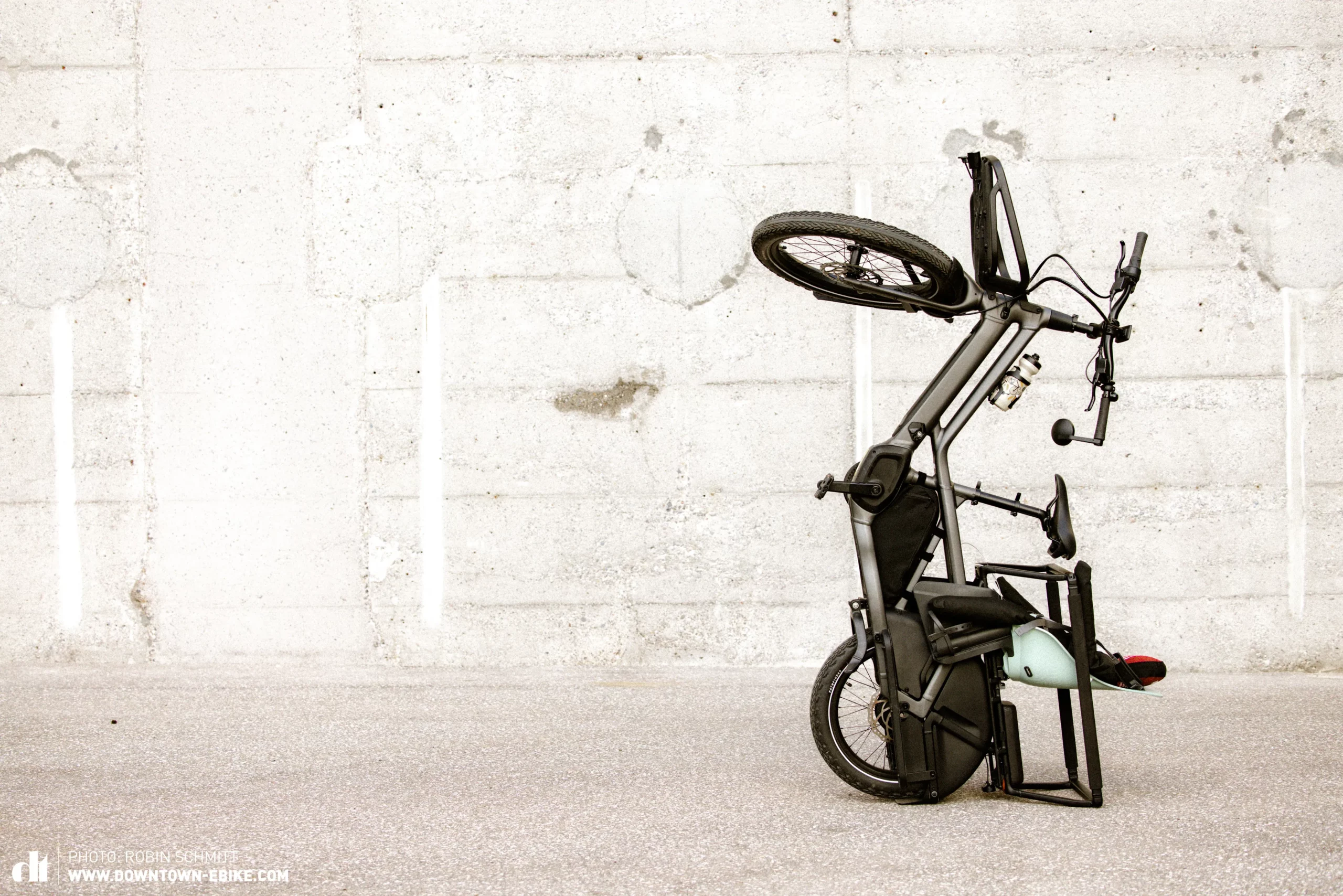
For bulky items that do not fit into a Eurobox, Specialized offer the Porto Cargo Base (€ 190). With a length of 73 cm and a width of 46 cm, so you can easily transport a party-sized pizza on the rear. The Cargo Base comes with three lashing straps that allow you to stack your luggage higher than just a pizza box. The platform can be loaded with up to 60 kg.
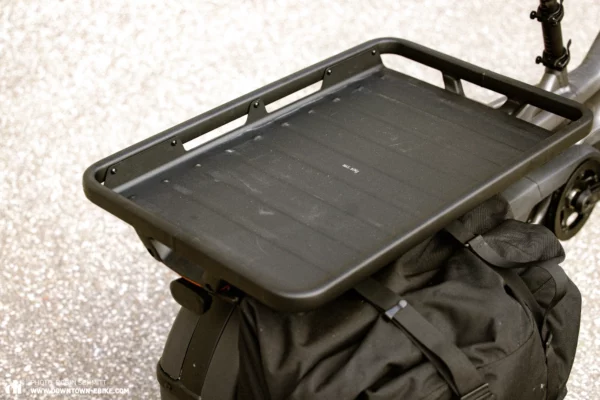

For the side rails of the rear rack, Specialized offer the Porto Side Bags (€ 130 each), customised side bags made from robust polyester. They can hold up to 44 litres of luggage with a weight of up to 25 kg. There is also a padded laptop compartment on the inside. To keep your laptop and shopping dry, two sturdy straps hold the top flap securely in place. Of course, the rack is also compatible with most panniers from other manufacturers.
| Accessory | Weight | Price |
|---|---|---|
| Porto Safety Rails | 2,020 g | € 220 |
| Porto Foot Pegs | 240 g | € 40 |
| Porto Foot Platform | 1,460 g | € 200 |
| Porto Passenger Seat | 300 g | € 50 |
| Porto Side Bag | 1,350 g | € 130 |
| Porto Cargo Base | 2,680 g | € 190 |
The accessories catalogue puts the competitive price (€ 6,500) and relatively low weight (39.9 kg) of the basic version into perspective. Our cargo bike, equipped for transportation tasks, weighs almost 44 kg with a platform and bag, and costs € 6,820.
The test bike for transporting children also weighs almost 44 kg and would cost € 7,020 with Safety Rails, Foot Platform and two Passenger Seats.
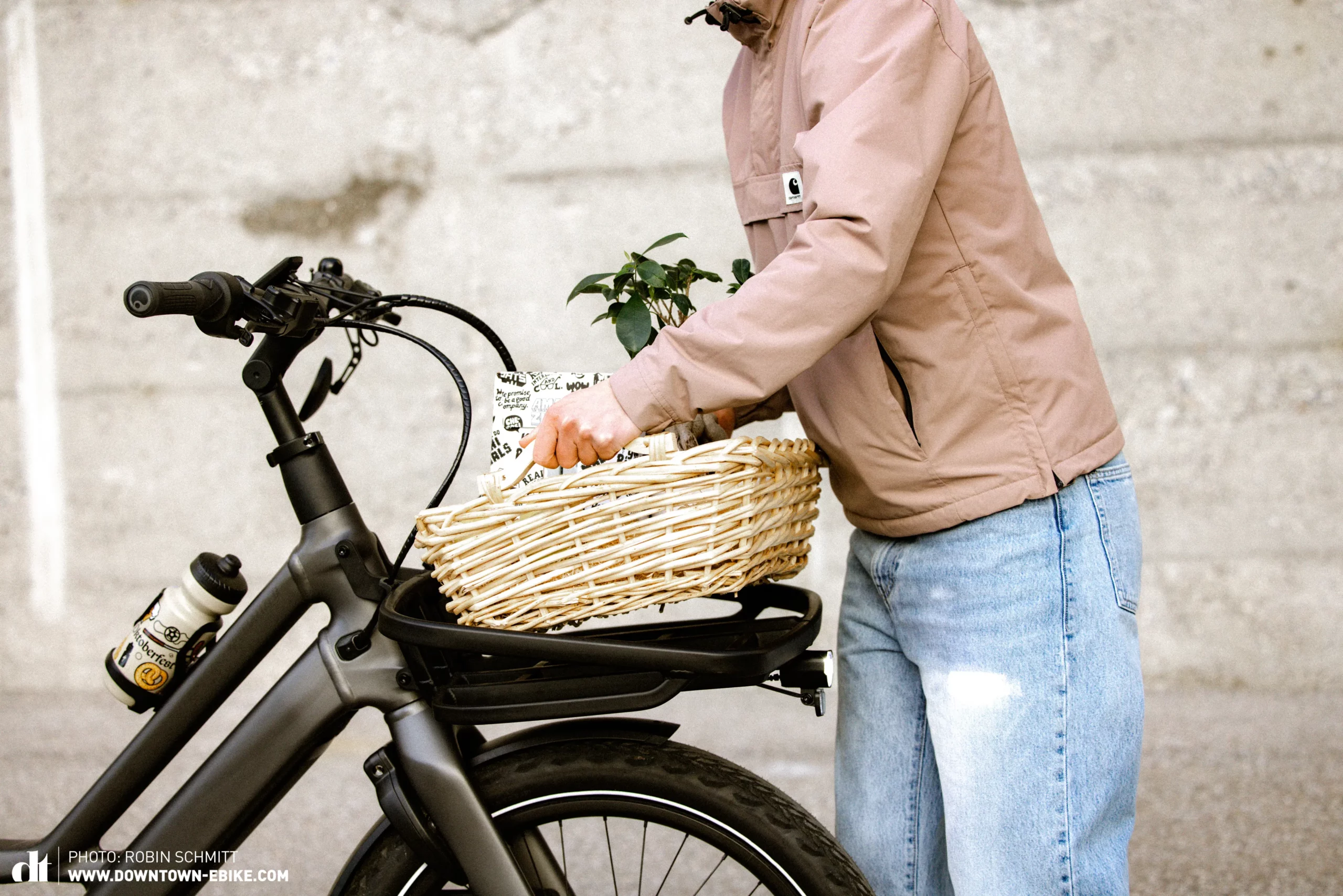
The spacious front carrier comes as standard and can be loaded with an additional 20 kg. The front carrier also has a MIK interface. This means, for example, that a shopping basket with a handle can be attached if all the space at the rear is taken by the seat cushions.
Behind the seat tube there is a small frame bag as standard, similar to the glove compartment in a car. Another clever detail that Specialized have borrowed from the car is the information on tire pressure depending on the load.
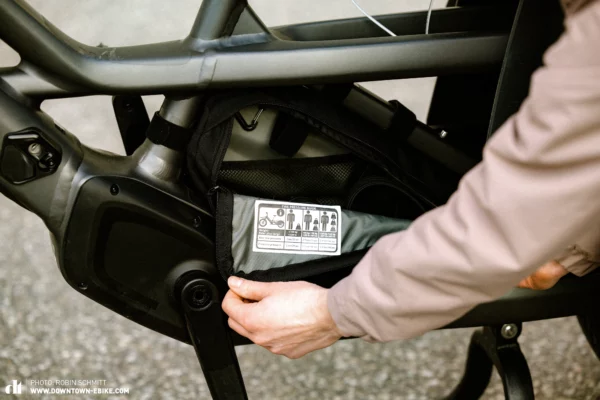


If that’s not enough, you can use the two mounting points on the rigid fork for a fork rack, such as the wickedly expensive Tubus DUO TITAN for € 450, although a more budget friendly one will certainly do. Another transportation option is hidden at the rear. The rear wheel arch has a threaded mounting point for a trailer with a maximum towing capacity of 60 kg. If you are looking for a suitable dog trailer, check out our head-to-head comparison of 9 models, here.
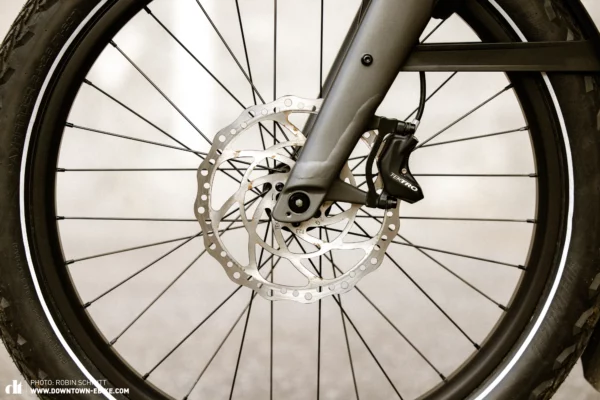
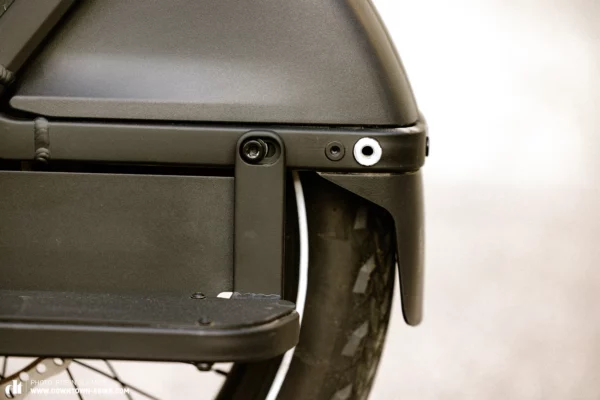

If you have been counting carefully, you may have noticed that only five transport options are mentioned, although we mentioned six earlier. The final one being the obligatory top-tube bottle cage, which is conveniently mounted within easy reach and doesn’t obstruct the step-through.
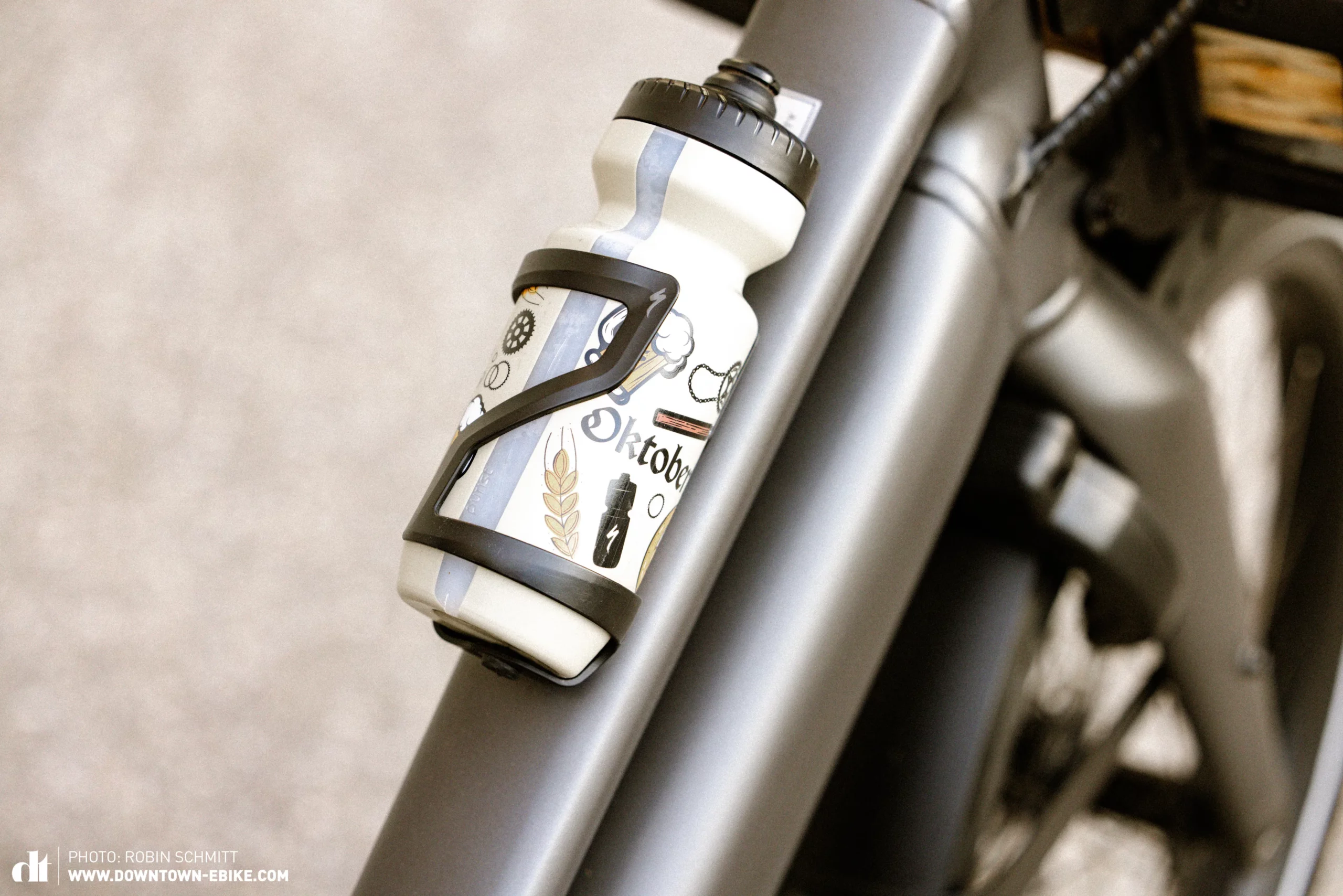
The motor system of the Specialised Porto longtail cargo ebike in detail
Specialized use the most powerful motor in their portfolio, the Specialized 2.2, to get a maximum of 200 kg going quickly. This versatile motor also powers the Specialized Levo and the Tero X, the winner of our sister magazine E-MOUNTAINBIKE’s SUV group test. For the Porto, however, it gets a special software (de)tuning and is internally called the Specialized 2.2 Cargo. The power is cut a little earlier to protect the motor from overheating. But with up to 90 Nm torque and 410% motor support, it still has enough power to propel the Porto effortlessly over hilly terrain.

The battery has a capacity of 710 Wh and is removed downward from the down tube in e-mountain bike style. The charging port and the keyhole for unlocking the battery are located on the side of the down tube. Charging and removing the battery always requires bending down a little.
If you already have a Tero X with a 710 Wh battery, you can use the Porto battery in the Tero X and vice versa because the batteries are the same. However, unlike the Tero X with two battery options, there is no such choice with the Porto. There’s also no range extender or dual battery option.
Due to the awkward battery removal and inflexible battery concept, the motor system seems a bit outdated. The Tern Orox R14 with its dual battery system is an impressive example of what is possible with today’s cargo ebikes. Still, 710 Wh is more than enough for most day trips.

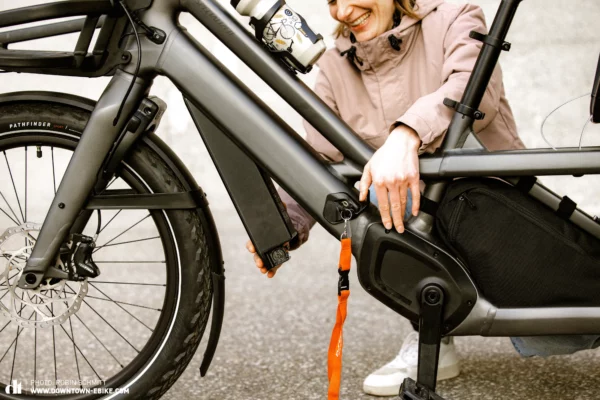
Specialized have chosen the MasterMind TCD colour display to show the motor data. As well as the basics such as speed, battery status and support levels. It also has some nice features such as showing the optimum cadence. On the left-hand side of the screen, an indicator shows traffic approaching from behind in the form of a white dot moving towards a green dot in the top left-hand corner. If the distance gets too close, the dot turns yellow and a warning beep sounds, similar to a game of Pac-Man. Distance is measured by Garmin’s radar system, fitted as standard to the rear rack.
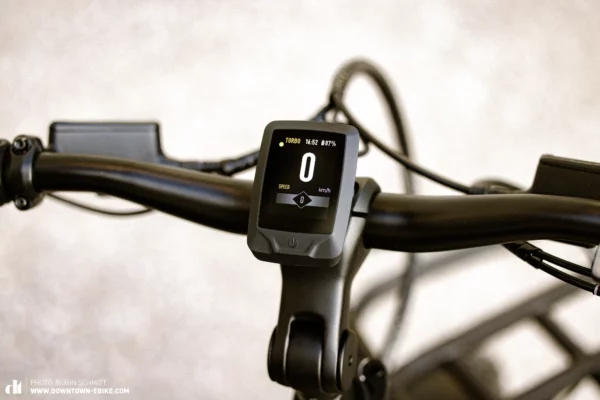
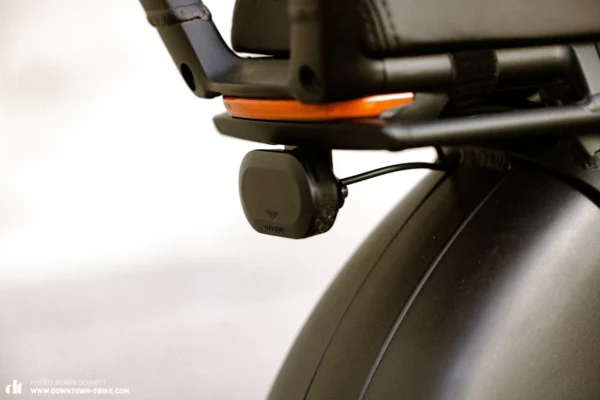
In combination with the Specialized Mission Control app, the motor system offers additional features. For example, you can use Smart Control to enter the remaining distance to travel, and the motor control will automatically reduce the motor power based on the remaining battery capacity so that you can still reach your destination with a certain level of motor support.
A motion-sensitive alarm can also be activated, including a motor system lock. If someone tampers with the bike, an alarm is triggered. However, the alarm on the small display is not much louder than a small alarm clock and can be hard to hear if you are taking a short break in a busy café. That’s why Specialized include an ABUS ring lock on the front wheel as standard, which shares its key with the battery.
There is no navigation option directly on the display, which would be particularly of interest for trekking bikers.
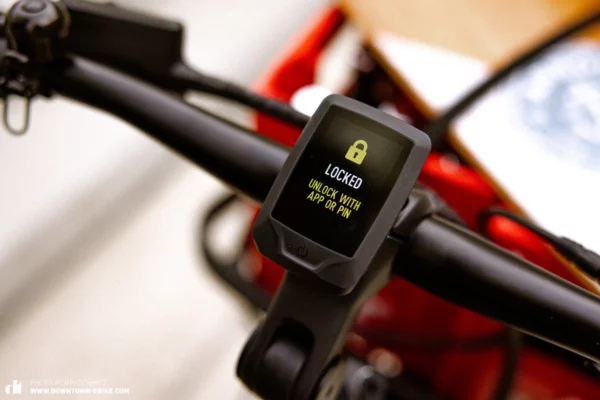
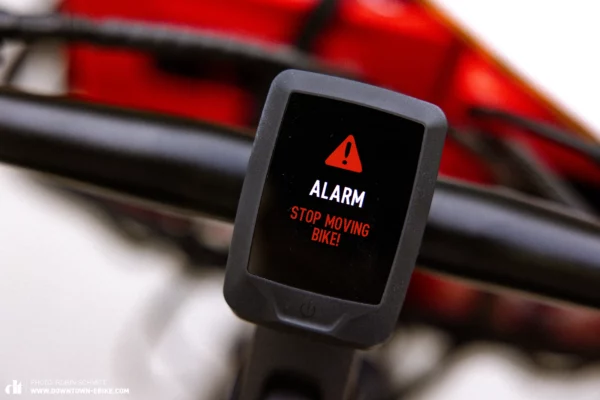
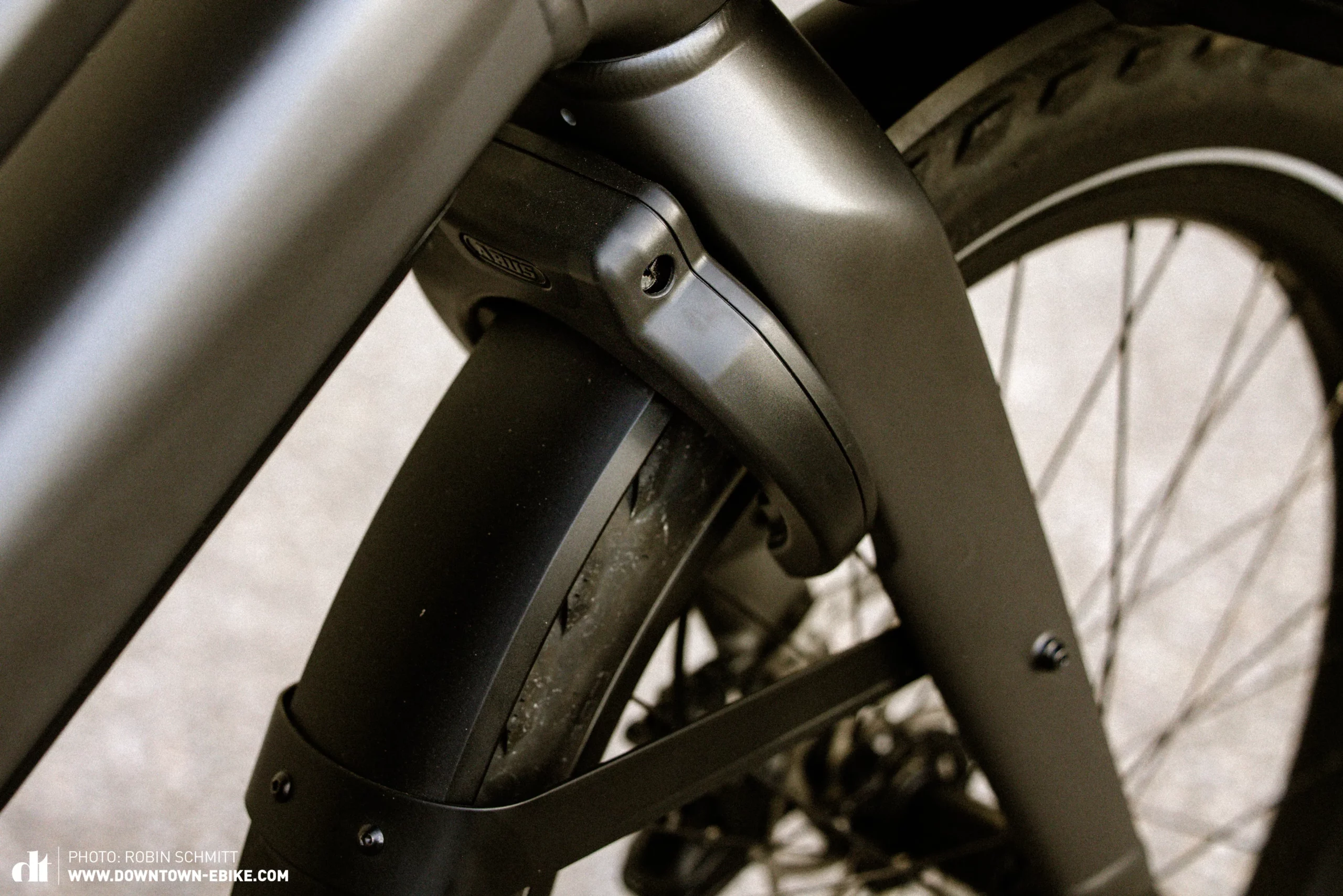
Specialized Porto
€ 6,500
Specifications
Motor Specialized 2.2 Cargo 90 Nm
Battery Specialized U2 710 Wh
Display MasterMind TCD
Fork Alloy with Tubus Duo Side Rack Mounts
Seatpost Double Extension-Post
Brakes Tektro Dorado 203 mm
Drivetrain enviolo Heavy Duty 380%
Stem Specialized, angle-adjust 77 mm
Handlebar Specialized Alloy 680 mm
Wheelset Specialized Alloy 24"/20"
Tires Pathfinder Sport Reflect 2.8"
Technical Data
Size One Size
Weight from 39.9 kg
Perm. total weight 200 kg
Max. payload (rider/equipment) 160 kg
Trailer approval yes
Kickstand mount yes
Specific Features
height adjustable handlebar
Abus ring lock
Lezyne and Spanninga lights
How does the Specialized Porto longtail cargo ebike ride?
For our first ride in Cham, we took everything but the kitchen sink from the Turbo Unit offices and strapped it to two Portos. Loading the cargo bikes is very easy, and a handful of lashing straps for bulky items included with the Porto helps.
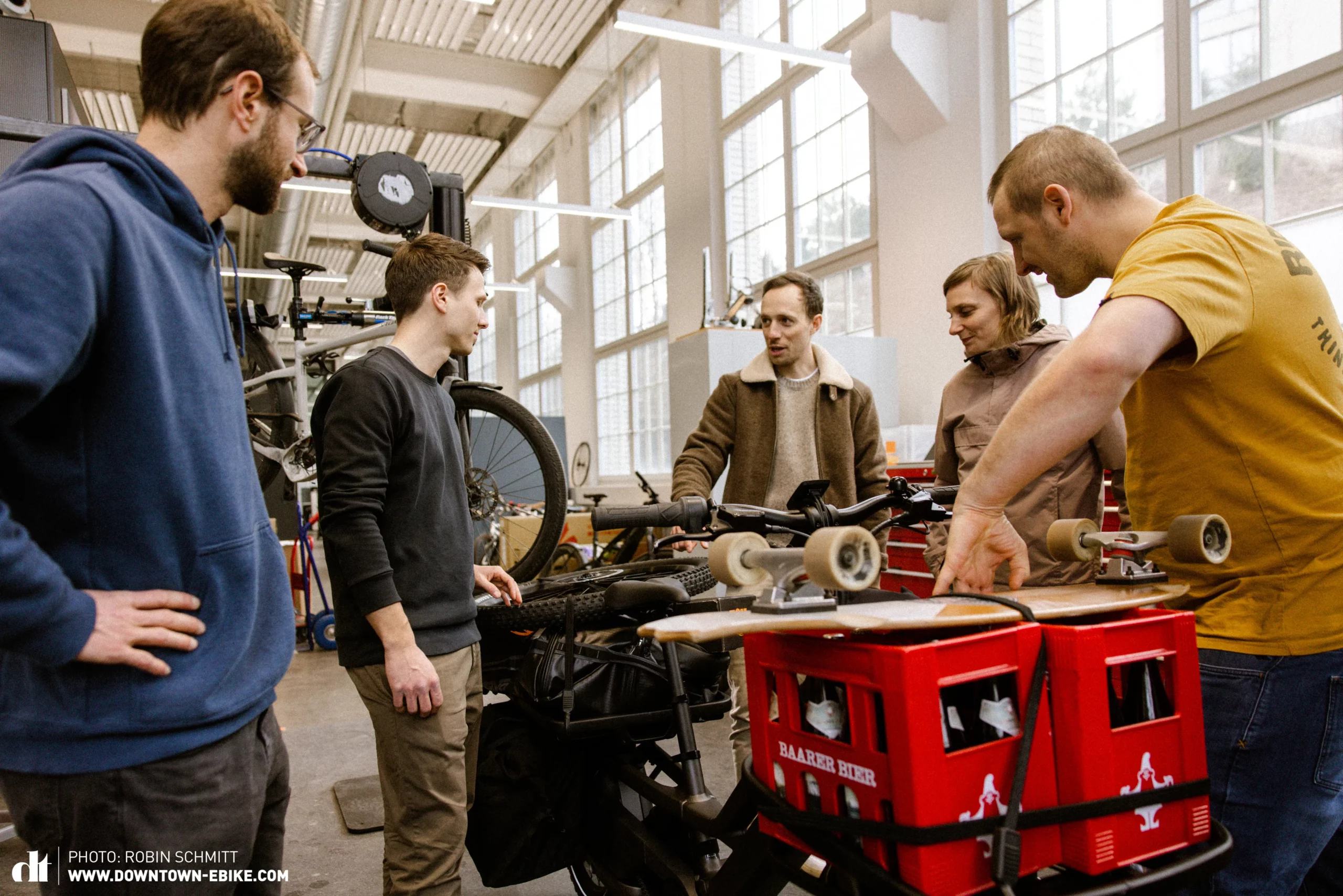
When supported by the double kickstand, the Porto is stable enough to do a handstand on its rear rack. Unfortunately, once the Porto is loaded with a lot of weight, lifting it up and down on the kickstand becomes a feat of strength. A handle on the underside of the saddle helps to balance the heavy bike on the kickstand, but we would have liked a foot lever.
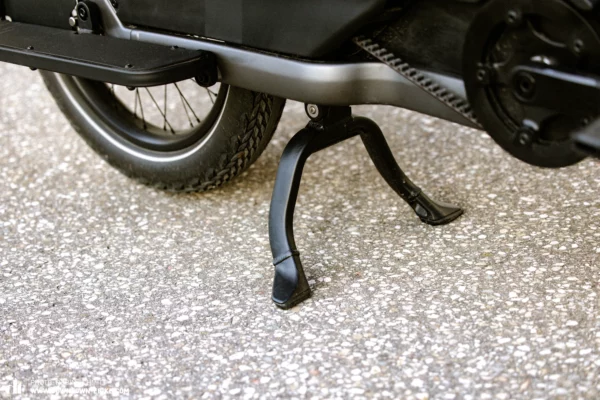

Thanks to the continuously variable Enviolo HD hub gear, you can select a very low gear for starting off, even when stationary. The motor has plenty of power, but even in turbo mode it is smooth and easy to control. With a full load, the first two or three metres might be a bit wobbly for inexperienced cargo riders. But from walking speed onward the Porto is very stable. It benefits enormously from its low centre of gravity, which is kept as low as possible thanks to the small 20″ rear wheel and low motor and battery integration. As long as you’re not trying to carry two giraffes stacked on top of each other on the rear rack, you can lean gently into bends and cruise along at a relaxed pace with the Porto.

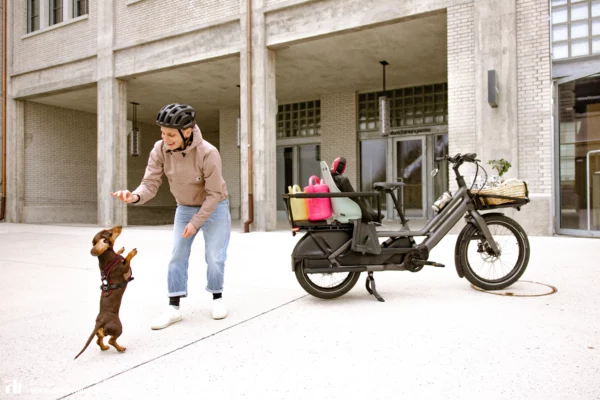
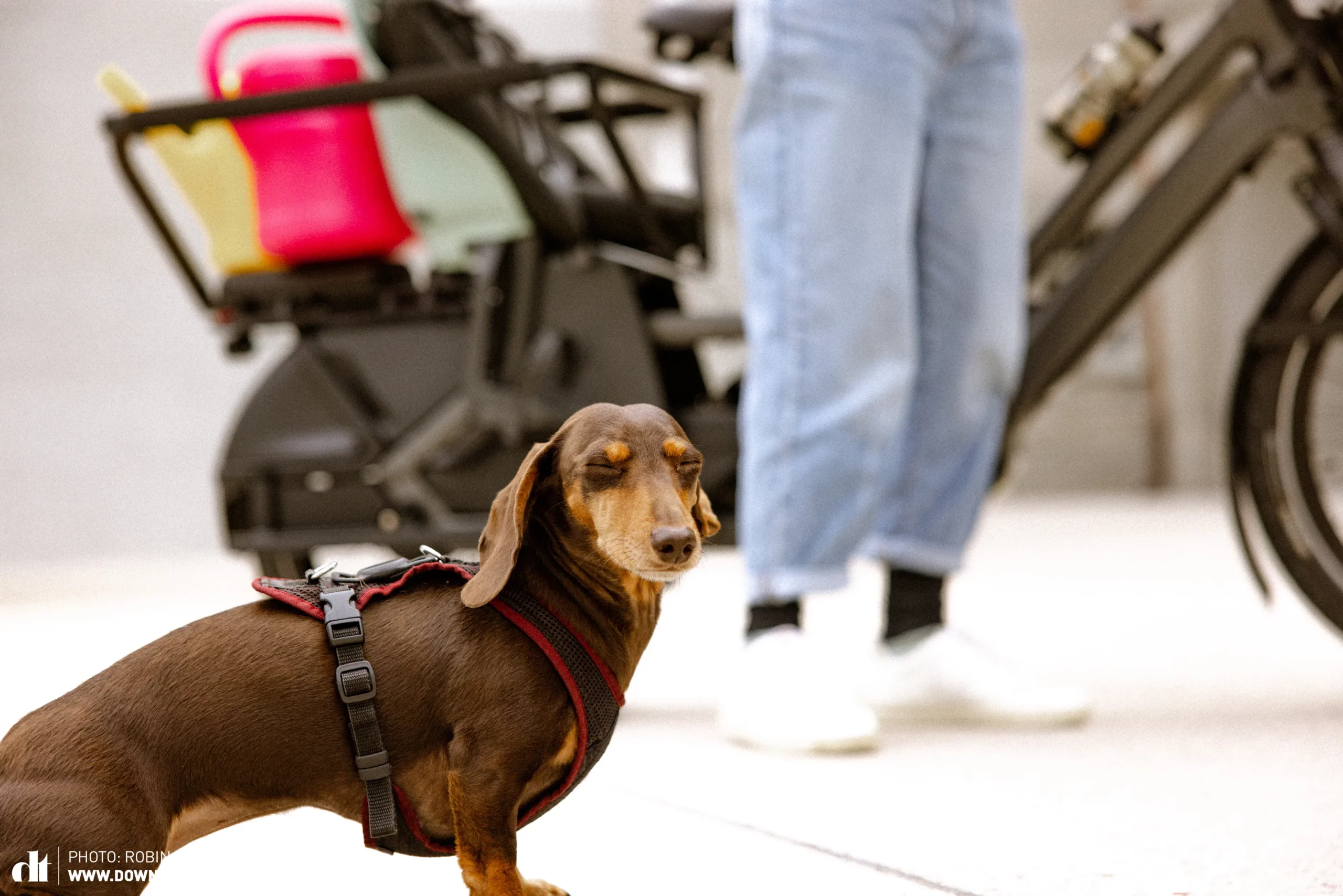
The handling of the Porto is responsive, making it relatively easy to manoeuvre around obstacles. It’s only when you’re navigating through narrow barriers and the rear of the bike suddenly hits against one that you’re reminded you’re on a cargo bike and not an ordinary city bike. Riders with long legs also need to be careful not to bang their knees on the rear-view mirror when taking tight left-hand turns.
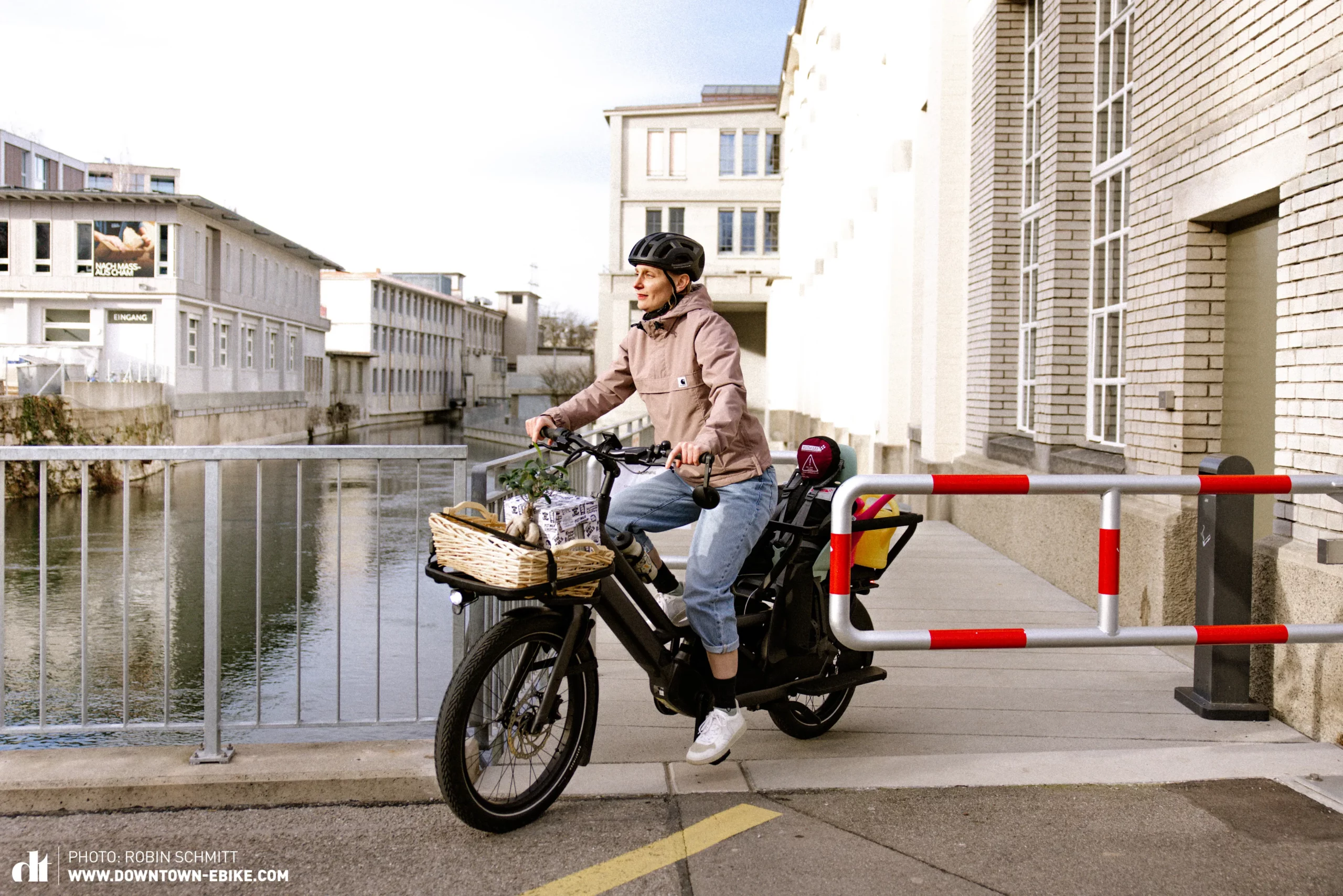
The somewhat redundant combination of radar and rear-view mirror is well-intentioned, but takes some getting used to and can be irritating in some instances. If the Garmin triggers a (false) alarm, you check the rear-view mirror to make sure that the approaching traffic is not coming from three lanes to the left. However, the mirror hangs far down and out of the field of vision due to an extension arm, so you have to find the correct angle. We would have preferred a wider mirror at handlebar level.
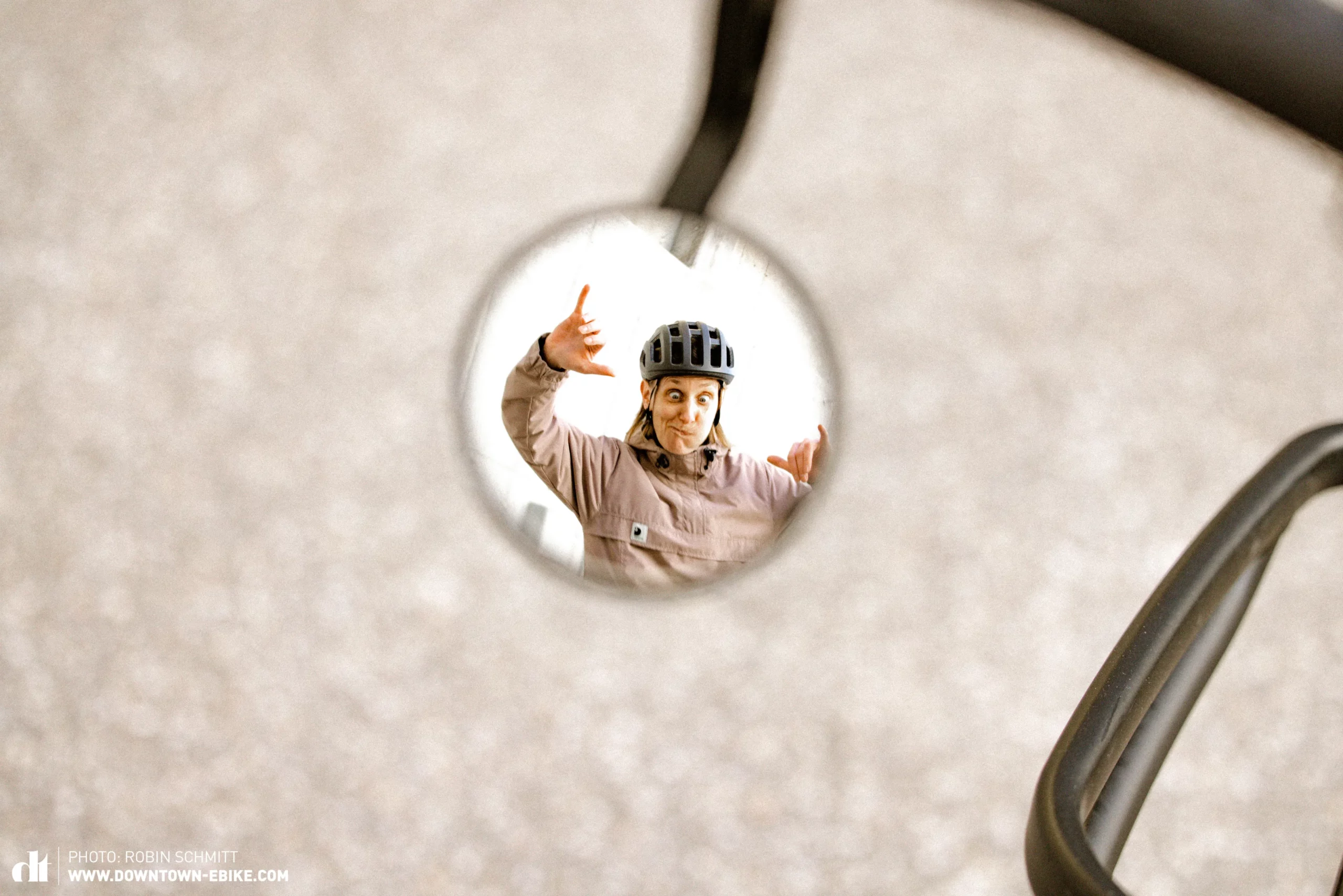
Smaller riders who cannot reach the ground with their feet are at a disadvantage when stopping at traffic lights. Without a dropper post they will always have to get off the saddle.
If you want to sprint away from other traffic from a red light, you’re in a difficult position. The motor is powerful but not very lively. The Enviolo gear hub has a limited range and is designed to be geared down rather than up to tackle steep ramps. To reach the 25 km/h limit, you either have to have gravity on your side or pedal at a high cadence. It’s a shame, because the torsional stiffness of the frame, the powerful TEKTRO Dorado brakes and the traction of the tires deliver enough confidence to let you and the kids on the back have some fun at high speeds on the Porto.

The Porto also benefits from its smooth and easy handling when travelling outside of the city. The 2.8″ wide Pathfinder tires provide good grip even on rough roads and also act as shock absorbers. Thanks to their large volume, they can filter out small bumps. Without additional active suspension elements, however, the Porto is not exactly comfortable once you leave the paved city centre. According to Specialized, suspension forks and damped suspension would quickly be overwhelmed by a weight of 200 kilos and lead to unstable handling. A compromise had to be found, but riding over curbs, potholes and small roots on a trekking tour will shake everything on the Porto, including you and your luggage.
You should also watch out for sharp stones on off-road rides and broken glass in the city. If you get a puncture on the rear wheel, changing the tube requires a lot of mechanical work. This is where the otherwise maintenance-friendly Porto is at a disadvantage.
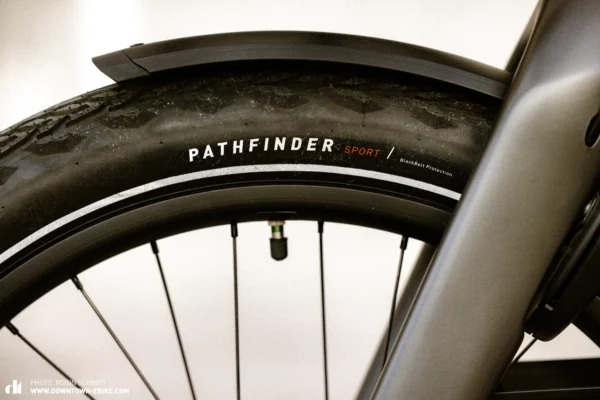
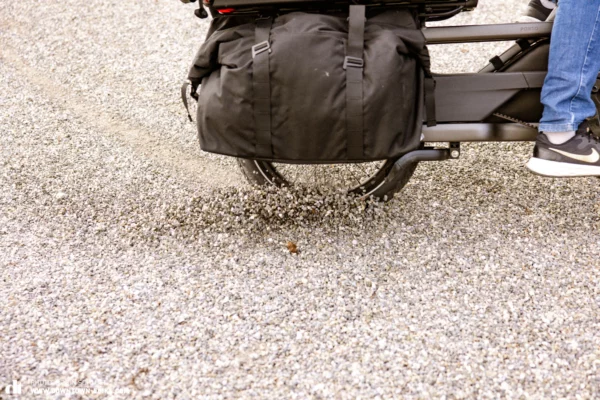
When returning late from a long trekking trip, the Lezyne Classic STVZO E500 lamp under the front rack ensures good visibility. However, it lacks a high beam for night rides. The Spanninga Commuter GLOW XE rear light, integrated in the rear rack, helps with visibility and has a brake light function.
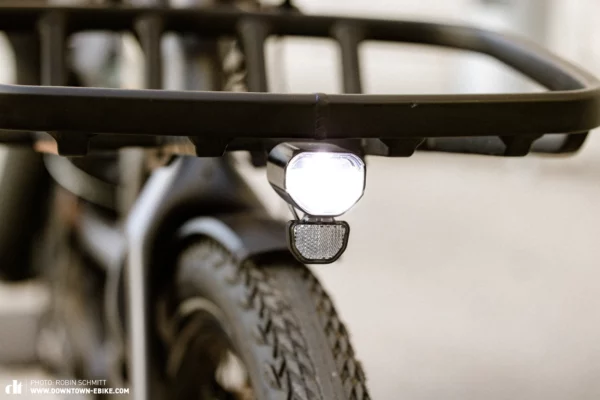
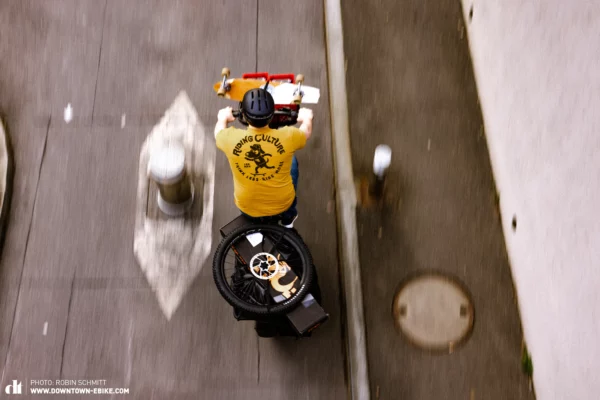
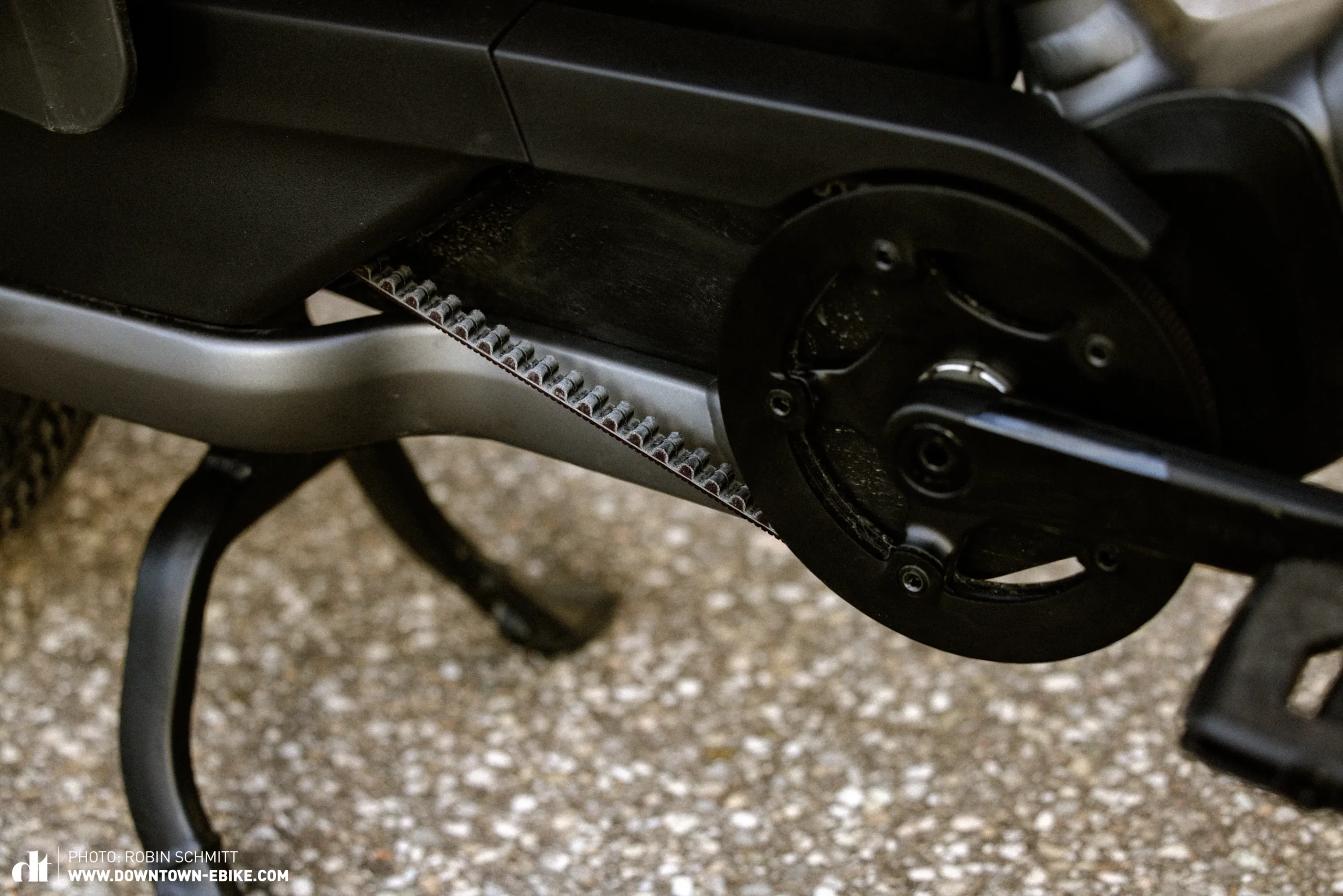
Having to lubricate the chain after a muddy ride is a thing of the past thanks to the carbon belt. The large mudguards also help to protect the frame from mud. This means you can even take the Porto straight into the hallway to unload. With a relatively short overall length of 206 cm, the Porto also fits into lifts (unless, of course, they are on the small side).

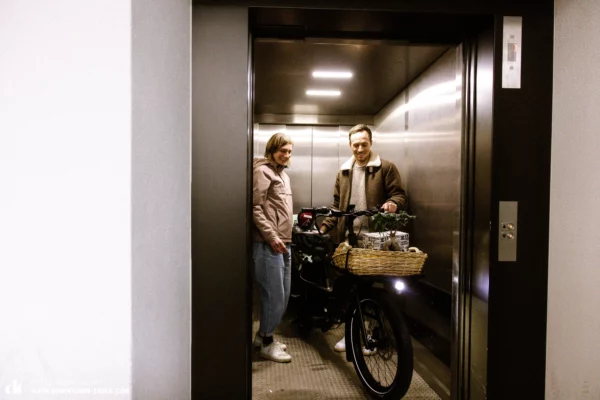
Conclusion on the Specialized Porto
Specialized’s first cargo bike has turned out well. Its good-natured handling and well-thought-out transportation concept are impressive. Thanks to a wide range of accessories, the Porto can be used for a variety of transportation tasks. Only the inflexible battery concept and limited off-road comfort spoil the first impression. We’ll see how the Porto stacks up against the best cargo bikes on the market in our upcoming cargo bike group test – stay tuned.
Tops
- smooth and secure riding experience
- versatile transportation concept with an extensive range of accessories
- high-quality workmanship
- smart and robust components
Flops
- requires excessive strength to lift onto the kickstand
- inflexible battery concept
- limited off-road comfort
- no dropper post
For more information visit Specialized.com
Words: Rudolf Fischer Photos: Robin Schmitt



